
Celebrating the Abundance of Local Foods in Southern Wisconsin


Celebrating the Abundance of Local Foods in Southern Wisconsin
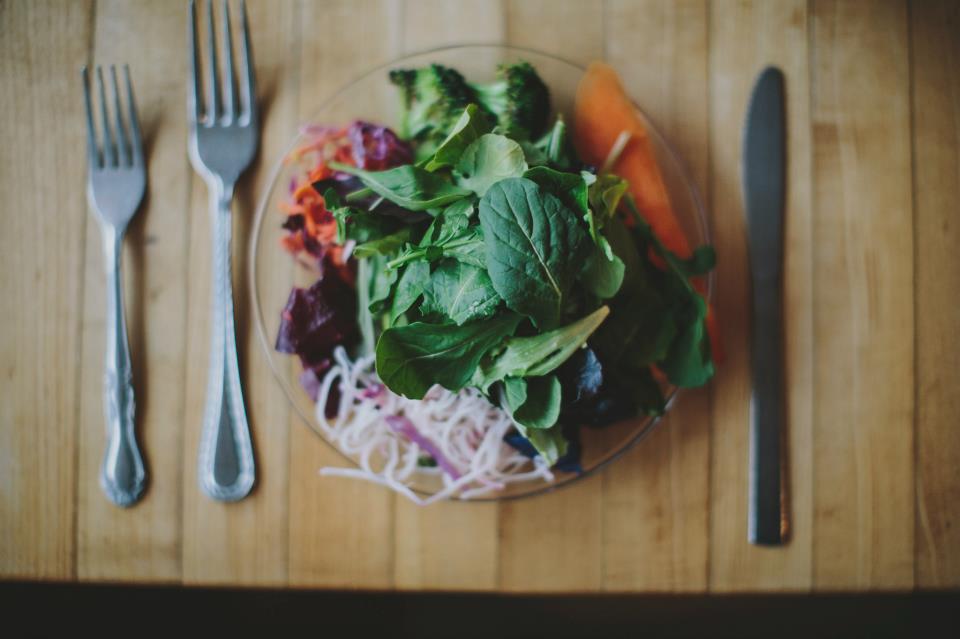
With over 200 local organic farms and a bustling producer-only farmers market, Viroqua serves as a hub for connecting with the people and practices that define this region. Featuring award-winning farm-to-table dining and surrounded by natural beauty, Viroqua offers the perfect setting to slow down and savor the vibrant flavors of Driftless Wisconsin.
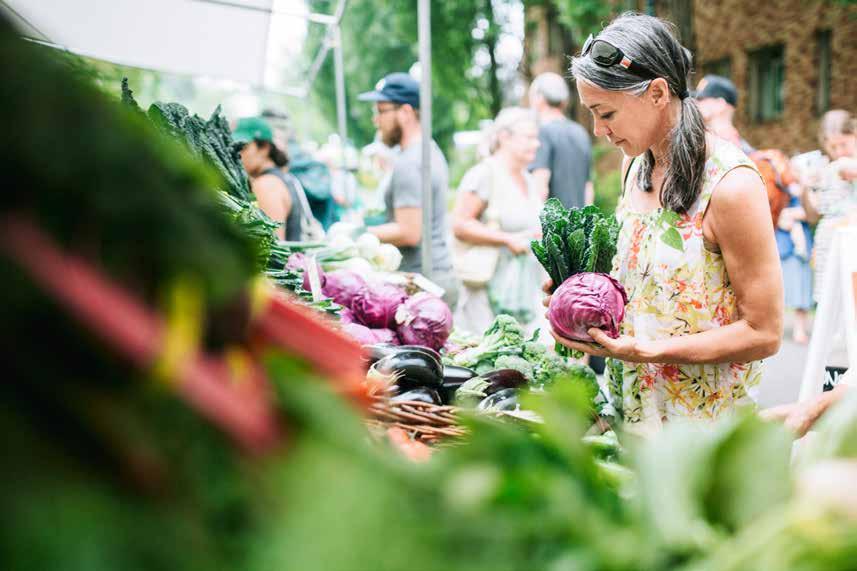


“The land is the real teacher. All we need as students is mindfulness.” ―ROBIN WALL KIMMERER,
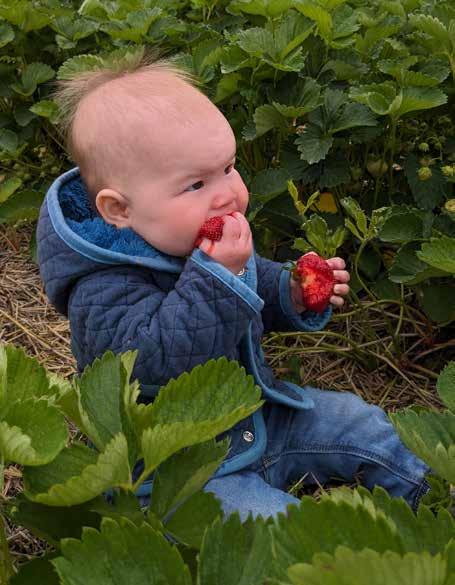

I always thought of myself as a city girl, that was, until I fell in love with and married an organic farmer. These days, I can’t imagine not living and working on the 46-acre vegetable farm we call home. This land excites me with every changing season and I feel deeply connected to this place, from the fields of salad greens to the deer roaming through them at dusk. I am grateful for this space, and I also understand that we are only the current stewards of this land.
We cannot begin this summer issue focused on “The Land” without an acknowledgment—a recognition and respect for the inherent sovereignty of the twelve First Nations that reside within the boundaries of Wisconsin. It is a chance to consider our shared past and present with Indigenous peoples. It’s a history involving colonization, forcible removal from homes and lands, and it’s a complex present where I know words of acknowledgment are simply not enough.
In personally reflecting on this, moving beyond words, for me, includes learning and gratitude. A good place to start learning about the history of the land we reside on is wisconsinfirstnations. org/map/ where you can explore which tribal lands and nations are located where you live and work. As I continue to learn about the history of the land, I strive to be a conscious and considerate current steward, helping to care for and preserve our environment for future generations.
I am overwhelmed with gratitude as I think about all the land provides. I feel it as I read through the stories in this summer issue—stories of people who understand the connection between the health of our land, our food and our communities. They are living lighter on the land by preserving the abundance of summer for the winter months (page 12) and supporting local growers and makers. Like the folks at Groundswell Conservancy and Rooted (page 32), they are addressing issues of equitable land access and helping support a new generation of farmers. And throughout this issue there is a celebration and deep thankfulness for the beauty, resiliency and bounty of the land.
I hope you take some time this summer to dig your hands into the dirt, take in the abundant flavors of the season and reflect on the past, present and future of the land we call home.
Cheers,

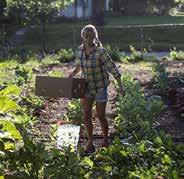
Be sure to check out ediblemadison.com for exclusive online content.
This summer, check out Local UpStarts, a quarterly digital column that celebrates local entrepreneurs who have participated in the Wisconsin Alumni Research Foundation’s UpStart program, a free entrepreneurship program for women and people of color. This season, we profile Michele Manske, founder and owner of Kinship Landscapes.


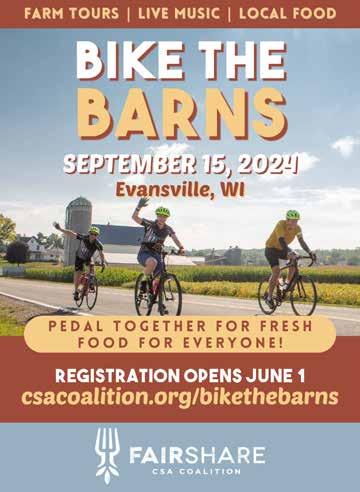









MARISSA DEGROOT
Marissa feels fortunate to be a part of our local food system as the managing editor of Edible Madison as well as working for Vitruvian Farms, her husband Tommy's organic vegetable and mushroom farm. She loves raising their daughter, Ollie, and their team of fur babies on the farm in McFarland.
SUNNY FRANTZ
Sunny is an editorial and commercial photographer with a studio on the west side of Madison where she lives with her husband, their two kids and a tiny dog. She specializes in food and product photography and loves the opportunity it gives her to connect with the many wonderful businesses and entrepreneurs in Madison.
ERICA KRUG
Erica is a freelance writer from Madison. In addition to writing and helping to run youth writing summer camps, she also works for Rooted, a local nonprofit, where she supports statewide farm-to-school efforts. Erica loves gardening, swimming in cold lakes and playing Yahtzee.
MANAGING EDITOR
Marissa DeGroot
PUBLISHER
Christy McKenzie
BUSINESS DIRECTOR
Christy McKenzie
SALES DIRECTOR
Lauren Rudersdorf
LAYOUT & PRODUCTION
Nicole Peaslee
COPY EDITOR
Andrea Debbink
CULINARY ADVISOR
Christy McKenzie
SOCIAL & DIGITAL PRODUCER
Lauren Rudersdorf
CHRISTY MCKENZIE
Christy is the owner of Pasture and Plenty—a specialty market and deli, demonstration kitchen, and meal kit pick-up and delivery service. P&P gives the community access to healthy, locally-sourced meals and foods that make eating well and eating local easier every day. She works to create and connect community around issues of food equity, access and agency. She is the publisher of Edible Madison and a sometimes writer.
NICOLE PEASLEE
Nicole is a graphic designer, photographer and artist from Madison. Her favorite things include off-trail hiking with her fiancé, Tyler, binging NYT Cooking videos and being a home chef, reading plenty of books and playing Dungeons and Dragons with her stepsons. She is also a co-founder of New Fashioned Sobriety, an alcohol-free community based in Madison which hosts monthly meetups and events. She aspires to someday photograph and design a cookbook for someone.
LAURA POE MATHES
Laura is a registered dietitian in private practice, focused on healing with real foods and herbs. She loves to spread knowledge and enthusiasm about great food, and teach traditional cooking and fermentation classes around the region. Originally from Missouri, Laura lives in Viroqua and now understands why cheese curds are a thing. She also loves to canoe, drink coffee and watch stand-up comedy.
CRICKET REDMAN
Cricket is an avid gardener, artist and designer, and messy cook. By day she runs Cricket Design Works and was creative director and partner of Edible Madison from the beginning of the pandemic through 2023. In 1993, she moved to Madison for grad school at UW-Madison and fell in love with the snowy winters, the Driftless landscape and her now-husband and business partner, Phil.
LAUREN RUDERSDORF
Lauren is the voice behind the local food blog The Leek & The Carrot where she shares recipes and stories about life, food and farming. Before that, she owned Raleigh’s Hillside Farm, an organic CSA vegetable farm, with her husband, Kyle. She advocates for local farms, local food and cooking with the seasons. When she’s not writing or testing recipes in her sunny kitchen, she’s probably on a trail somewhere with her daughter, Lillyan.
ADVERTISING & SPONSORSHIPS
Lauren Rudersdorf laurenr@ediblemadison.com
DRIFTLESS REGIONAL SALES MANAGER
Kristen Wagner kristen@ediblemadison.com
CONTACT US
Edible Madison 4313 Somerset Lane Madison, WI 53711 hello@ediblemadison.com
SUBSCRIPTIONS
Subscriptions are available beginning at $35 annually. Learn more at ediblemadison.com/subscribe
We want to hear your comments and ideas. To write to the editor, use the mailing address above or email hello@ediblemadison.com
Edible Madison is published quarterly by Forager Publishing, LLC. All rights reserved. No part of this publication may be used without written permission by the publisher. ©2024
Every effort is made to avoid errors, misspellings and omissions. If, however, an error comes to your attention, please accept our sincere apologies and notify us. Thank you.
VISIT US ONLINE AT EDIBLEMADISON.COM



BETH SKOGEN
Beth is a Madison area photographer who delights in the connections that photography facilitates and the small details that make life worth documenting. She is the founder of Powered by Plants, a cycling team of like-minded individuals who are focused on a vegan lifestyle and sharing compassion for animals and the planet.
DUKE WELTER
Duke lives in Viroqua and has long enjoyed the fruits of nature. Over a lifetime of hunting, fishing, berry-picking and just scrounging, he has enjoyed cooking and eating many foods he finds in the wild. Duke is practicing retirement again, following careers in conservation, law and journalism. His first career was as a reporter for The Capital Times, and his articles have been published in Isthmus, Midwest Fly Fishing, Ski Racing magazine and other publications.
HANNAH WENTE
Hannah grew up as a 4-H kid on the shores of Lake Michigan. She is a freelance writer and graphic designer based in Madison. In her previous role as communications director for REAP Food Group, she helped launch the new statewide Farm Fresh Atlas project and supported farm-to-school and farm-to-business efforts. When she’s not gardening, cooking or baking, you can find her playing ultimate frisbee or paddling the nearest lake.

Tuesdays from June 25-August 13 7-8:30 p.m.

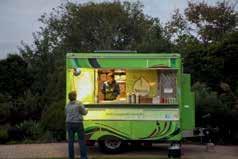
There are hundreds of species classified as an allium. They come in all shapes and sizes, from a tall, slender leek to a rotund red onion. The group also includes garlic, chives, scallions and shallots. Endless numbers of recipes across the globe utilize alliums thanks to their robust and distinct flavors that range from deeply savory to subtly sweet.
In Wisconsin, alliums can be found year-round with ramps appearing as early as March and some storage varieties of onions lasting all winter if properly cured. The summer alliums, however, are some of our favorites, bringing punchy flavor and color to a variety of dishes. Here are three summer alliums we suggest adding to your market basket this season:
Not to be confused with scallions or green onions, fresh or spring onions are young versions of full-sized bulb onions, generally harvested in late June or July. They can often be found at farmers markets with their edible green tops still attached to the small white or red bulb. Compared to an aged onion, fresh onions have a bright and more mild flavor. They carry more bite than a scallion but when cooked become tender and sweet.
Like onions, shallots grow in bulbs but like their garlic cousin they also grow in clusters, giving shallots their distinctive torpedo-like appearance. Shallots pack less of a punch compared to onions. Their more mild flavor and touch of sweetness lend themselves well to being cooked or used raw, making them incredibly versatile veggies. Shallots can be used raw and minced in a vinaigrette and mignonette or caramelized to top a grilled steak or mashed potatoes.
Garlic cloves planted in the fall will, the following June, send out a long green shoot—the garlic scape. The bulge at the end of a garlic scape is actually a bud which would eventually flower, consuming energy needed to help grow the garlic bulb. Farmers snap off the curly shoot which can then be used raw or cooked. Its mellow garlicy flavor makes it perfect for pesto, stir-fries or in place of garlic cloves in most dishes.
Serves 4-6
Prep time: 30 minutes
Cook time: 30 minutes
Sweet summer onions are the star of this fun and easy showstopper of a dish. Inspired by viral recipes, these tarts are baked face down! The onion caramelizes while the tart dough bakes to a crisp golden brown. Perfect for a picnic, these tarts make a great appetizer or a light summer meal served with a green salad.
1 sheet puff pastry or homemade rough puff pastry, thawed
8 ounces soft cheese (sheep, goat or cream cheese)
3 ounces gruyere, shredded
½ teaspoon paprika
¼ teaspoon ground black pepper
Pinch of crushed red pepper, optional
2 tablespoons minced spring onion greens
1½ tablespoons honey
1½ teaspoons balsamic vinegar
2 tablespoons olive oil
Salt and pepper to taste
6 sprigs thyme, or your favorite summer herbs (chervil, rosemary, tarragon or parsley)
3 spring onion bulbs, trimmed and peeled, sliced from root end to tip in ¼-inch slices
1 egg, whisked with 1 tablespoon water
DIRECTIONS
1. Preheat the oven to 425 degrees F. Line a 13x9-inch baking sheet with parchment paper.
2. Unfold the puff pastry and slice it into six (roughly 3.25"x3.5") rectangles. Place on the prepared baking sheet, leaving an inch between, and outline each rectangle with a pencil.
3. Mix together the soft cheese, gruyere, paprika, black pepper and minced spring onion greens.
4. Divide the cheese mixture evenly among the puff pastry rectangles, and spread evenly, leaving a ¼-inch border around the edges. Remove the puff pastry rectangles from the parchment paper and set them aside.
5. To make the glaze, whisk together the honey and balsamic vinegar.
6. Drizzle 1 teaspoon of the honeybalsamic glaze and 1 teaspoon of olive oil at the center of each rectangle outline on the parchment paper, leaving a ¼-inch border around the edge. Season with salt and pepper. Add a sprig of thyme and lay the sliced onions on top of the thyme.
7. Cover the onion clusters with the puff pastry rectangles, cheese side down. Press the edges of the rectangles over the onions, flat to the parchment paper. Use a fork to crimp the edges or a small cookie cutter to push texture patterns into the puff pastry, being careful not to cut through. Brush the pastry with the egg wash.
8. Bake the tarts in the preheated oven until the puff pastry is a deep golden brown, about 20 minutes. Let cool slightly before using a spatula to carefully flip the tarts. Serve warm or at room temperature.
Check out more recipes available online!
EDIBLEMADISON.COM/RECIPES
 June brings beautiful fresh onions and garlic scapes.
June brings beautiful fresh onions and garlic scapes.
Immerse yourself in the goodness of Wisconsin products at these farm stores, butcher shops and markets. They make it easy to become a more conscious consumer, helping support a local food system that can be good for farmers, animals and the Earth.
And yes, you’re going to need a bigger tote.

206 N. Iowa St., Dodgeville
Nestled on a corner of Main Street, across from the Dodgeville Theatre, a former drugstore has been transformed into a charming grocery-café. Husband-and-wife team Cathryn “Cari” and Cliff Gonyer dreamed of a place for the community to connect with food from their sustainable Rockwell Ridge Farm and other area growers and producers. They regularly expand their offerings through relationships with fellow Dane County Farmers’ Market vendors.
Visitors can purchase dozens of Wisconsin products like local eggs, Meadowlark Organics grains, Seven Seeds Farm beef or Kingfisher Farm sauerkraut and kimchi. Prepared products include a bacon mac-and-cheese made with Hook’s 1-year cheddar and Rockwell Ridge bacon, or watermelon feta mint salad— perfect for summer barbeques.
3236A University Ave., Madison
The Conscious Carnivore is two-thirds in-house butcher shop and one-third market— and 100% Wisconsin goodness. This place is a must-stop for summer cookout prep. Grab a thing or two for the grill from a rotating line-up of small batch, slow-smoked sausages, handstuffed chicken cordon bleu and homemade sauces. Meat comes from Wisco farms and is organically and ethically raised—the beef is from Ryan Martin Farm in New London and dry-aged in the store. Pork is from swine expert Zen Miller in Appleton.
You’ll not only get to know the farmers and flavors of the state, staff here have an intimate knowledge of food so you can learn new techniques while shopping for an intimate dinner or weekly sundries. (Yes, even sloppy joes).
12 S. Carroll St., Madison
This downtown Madison shop boasts foods from the world’s cheese meccas: Italy, Spain and Wisconsin. The Fromagination cheesemongers recommend bringing a Blakesville Creamery goat cheese and a bubbly wine to your next summer shindig. Through classes and demos at the store, you can gain an intimate knowledge of food pairings, cheese-making and food history.
Photos courtesy of Cathryn's Market, Vitruvian Farms and Wander Provisions
2727 US-51, McFarland
Vitruvian Farms started out delivering salad greens and mushrooms to area restaurants including Sardine and Cadre. Driven by a passion for bringing exceptional produce directly to consumers, they ventured into home delivery of products from their farm and other area producers in 2020, paving the way for an on-farm store. With over 300 products in addition to their organic produce, you can find everything you need to host a full dinner party—from a charcuterie board featuring Driftless Provisions salami to a main course of RP’s lasagna sheets with sautéed spinach and mushroom to a dessert of Chocolate Shoppe ice cream drizzled with Dreamfarm caramel sauce.
128 Albany St., Spring Green
Heading out for a hike, paddle or a play at American Players Theatre? This half-grocery, half-deli in Spring Green has everything you need for a summer picnic. Pick up straightforward, Wisconsin-made pantry staples like sorghum syrup, black currant preserves and hazelnuts.
A large cooler, nicknamed The Thirst Trap, holds dozens of local nonalcoholic beverages like Siren Shrub and NessAlla Kombucha. Baguette sandwiches are made-to-order and can be paired with grab-and-go side salads. Picnics can be ordered online and picked up at precise times.
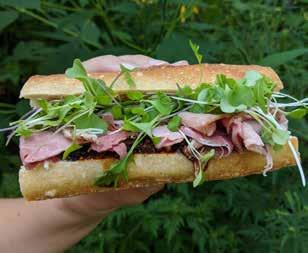
Town Square, Janesville, Saturday, 8 a.m. to 1 p.m.
Farmers markets are more than just a fun and practical way to shop seasonally and locally. They offer a unique opportunity to connect with your farmers and makers.
This Saturday market blends community connections, kids' activities and live music for an unforgettable shopping experience. This market was created in 2005 by Forward Janesville and local business partners as a place for Rock County residents to buy fresh, healthy foods. SNAP EBT, WIC and Senior FMNP benefits are all accepted at the market. It has become an epicenter of local foods—with over 75 weekly vendors offering high-quality vegetables, fruits, eggs, meats, syrups, jams, baked goods and more. Leashed dogs are welcome.
Visit ediblemadison.com for a guide to local markets in our region.
Top left: Vitruvian owners, Tommy Stauffer and Shawn Kuhn, celebrate their on-farm store which opened last year. Top right: A sourdough baguette sandwich busting with microgreens is a favorite at Wander Provisions in Spring Green.$32,500
TOTAL IN CASH PRIZES AWARDED TO MARKETS

2,435
MARKETS PARTICIPATED IN 2023
VOTE FOR YOUR FAVORITE MARKET
The season of farmers markets is here! Across southern Wisconsin you can support local growers and producers while enjoying the bounty of summer. Visit ediblemadison.com for a guide to local markets in our region.
COLUMBIA COUNTY
Portage Farmers Market
Thursdays 12:00–5:00 PM portagewi.com
DANE COUNTY
Dane County Farmers' Market
Saturdays 6:15 AM–1:45 PM dcfm.org
Eastside Farmers Market
Tuesdays 4:00–7:00 PM eastsidefarmersmarket.org
Monona Farmers Market
Sundays 8:30 AM–12:30 PM mononafarmersmarket.com
Monroe Street Farmers Market
Sundays 9:00 AM–1:00 PM monroestreetfarmersmarket.org
Mount Horeb Farmers Market
Thursdays 3:00–6:30 PM mthorebfarmersmarket.com
Northside Farmers Market
Sundays 8:30 AM–12:30 PM northsidefarmersmarket.org
South Madison Farmers Market
Tuesdays 2:00–6:00 PM
Sundays 11:00 AM–3:00 PM southmadisonfarmersmarket.com
Westside Community Market
Saturdays 7:00 AM–12:30 PM westsidecommunitymarket.org
GREEN COUNTY
New Glarus Farmers Market
Fridays 3:00–5:30 PM facebook.com/ newglarusfarmersmarket
Mineral Point Market
Saturdays 8:30–11:00 AM mineralpointmarket.com
Cameron Park Farmers Market
Fridays 4:00 PM-Dusk cameronparkmarket.org
RICHLAND COUNTY
Richland Area Farmers Market
Wednesdays 1:30–5:30 PM richlandareafarmersmarket.org
ROCK COUNTY
Beloit Farmers Market
Saturdays 8:00 AM–1:00 PM downtownbeloit.com/us/ farmers-market-2
Janesville Farmers Market
Saturdays 8:00 AM–1:00 PM janesvillefarmersmarket.com
SAUK COUNTY
Baraboo Farmers Market
Wednesdays, Saturdays 7:30 AM–12:30 PM baraboofarmersmarket.com
Spring Green Farmers Market
Saturdays 9:00 AM–12:00 PM springgreenfarmersmarket.com
VERNON COUNTY
Viroqua Farmers Market
Saturdays 8:00 AM–12:30 PM viroqua-wisconsin.com
Vote for your favorite southern Wisconsin farmers market to be recognized in America’s Farmers Market Celebration™ (AFMC).
AFMC raises awareness of the essential markets like those listed here that are making a difference for farmers, ranchers and communities. From June 1 to July 31 you can vote for your favorite market to help them earn national recognition and a cash prize! Learn more at markets.farmland.org
Scan to vote for your favorite market:

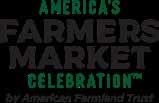
The satisfaction you feel as you open a jar of homemade pickles, pour a cup of tea made with home-dried herbs, take a bite of yogurt you fermented yourself: this simply cannot be matched by commercially-produced food. Whether you’re a hardcore homesteader, backyard gardener, farmers market devotee or simply someone looking to reduce food waste in your home, then food preservation is for you! The act of taking fresh food and preparing it for long-term storage can be done in many ways and on any scale with nearly any food.
For those who grow their own food, you can reap the benefits of your hard work all year round, not just during peak harvest season. At-home food preservation can lock in nutrition and flavor that are hard to match when purchasing from the store. Some methods, such as fermentation, actually add nutrition to foods as well. When you make and
Fermentation: This is my favorite form of food preservation. Fermented foods are becoming very popular, but these have been around for at least 10,000 years. Fermentation simply means the transformation of food through microbial action—i.e. Cabbage into sauerkraut, grapes into wine, milk into cheese. In the case of most foods, these microbes are bacteria or yeast or a combination of the two. The increased acidity that results from the fermentation process, along with the use of salt, keeps ferments edible for a long time. Unlike preservation methods using heat, fermentation preserves nutrients and adds some as well, including vitamins K2 and B12, pro- and post-biotics, which support gut health and beyond. It also improves the digestibility of foods, such as dairy, as fermentation dramatically reduces the lactose
preserve your own food, you can control what goes into the food and how it was grown, often avoiding preservatives, pesticides and additives that healthminded home cooks are typically trying to avoid.
There are non-nutritional reasons to do your own food preservation as well. Making most things at home, including preserved items, is typically lower in cost than buying them at the store. Food preservation is a key part of reducing food waste in our home kitchens. It is estimated that over half of all wasted food comes from homes and almost all of that goes to landfills. By increasing the shelf-life of fresh food, using up food that may be past its prime but still edible, cooks and growers can start moving away from more wasted food. Preservation can be done on larger scales to accomplish this goal as well, such as on vegetable farms at the end of the season.
content in dairy products. Vegetable fermentation can typically be done with simple equipment and getting started usually only requires a vessel (glass or ceramic), salt and weighing tools, and ferments can be kept in the fridge or root cellar for 6–12 months, a significant increase in shelf-life from fresh vegetables.
Fermented foods to make this season: sauerkraut, kimchi, yogurt, kefir, carrots, radishes, cucumbers, fermented pickled vegetables (see my favorite recipe on page 14), sourdough bread, beet kvass, kombucha
Books and resources to get started: Fermented Vegetables by Kirsten Shockey, Wild Fermentation by Sandor Katz, The Cultures for Health website: culturesforhealth.com
Gaining skills to preserve food adds to our personal food security, making folks more self-sufficient and less dependent on commercial food sources. Perhaps best of all, there is a deeper connection with our food when we take part in preparing or preserving it and an immense sense of satisfaction and accomplishment when we gain a new skill. And bonus: our brains really like it when we complete tasks with our hands!
Though I have most certainly convinced you to at least dip your toe in the water of food preservation, getting started can be overwhelming. Here is a brief primer on the main forms of preserving, or “putting up” food at home, complete with some recipe ideas and resources to guide you on your journey. Now get your apron, some mason jars, and let’s get preserving. There are certainly no shortages of new recipes and methods to try this season!
Freezing: A more energy-intensive form of food preservation, freezing preserves the nutrient content of foods for the most part, and allows flexibility in how foods are prepared prior to freezing (blanched whole veggies, soups, jams, etc.). Before the advent of home freezers, freezing was traditionally done by cultures who had access to ice for at least part of the year, but we can now enjoy it as a way to preserve food at peak freshness. You can freeze a wide variety of foods right after harvesting, then simply pull them out of the freezer as needed throughout the year—my favorite uses for the freezer are probably frozen fruit for a taste-of-summer pie during the chilly months and frozen veggies for a stir-fry or quick side dish. Using vacuum-sealed bags can prevent freezer burn, but to avoid plastic, many things can be frozen in glass storage containers.
Be sure to use freezer-safe jars if freezing liquid items such as jellies or soups in glass to prevent your jars from breaking!
Things to freeze this season: Blanched green beans and broccoli, pre-made bone broths and soups (I like to freeze in silicone cubes, then package), pesto, chimichurri, or other herb purees, berries, rhubarb, sweet corn, freezer jams
Books and resources to get started: Freeze Fresh by Crystal Schmidt and Eve Kilcher; It’s Always Freezer Season by Ashley Christensen and Kaitlyn Goalen; The Farm Girl’s Guide to Preserving the Harvest by Ann Accetta-Scott
Drying: This is the oldest form of food preservation, dating back at least 12,000 years, so you can dry food in a very low-tech way with little equipment. Drying can be done with an electric or solar dehydrator. Dry smoking, where the smoke acts as the dehydrator, is most often done with meats. A dehydrator is not always necessary, however, and drying can often be achieved by simply hanging or laying items flat on a screen, which works great for many herbs. You can dry leafy herbs like basil or oregano whole, then store them in airtight containers, crushing them right before adding to a dish. To keep flavor intact for herbs, avoid crushing leaves or flowers until just before use, which keeps more volatile oils intact and holds on to flavor and medicinal properties.
Dried foods to make this season: homemade fruit leather, culinary herbs (basil, oregano, thyme), medicinal herbs and flowers (calendula, tulsi, bee balm), tomatoes, zucchini, eggplant, onions, garlic (make your own garlic powder!), elderberries, rose hips, beef jerky
Books to get started: The Beginner’s Book to Dehydrating Food by Therese Marrone; The Ulti mate Dehydrator Cookbook by Tammy Gangloff; Preserving Everything by Leda Meredith
Canning: Believe it or not, canning is the most recently invented of all preservation methods dis
cussed here—it has only been around since about 1800—since it requires the most technology: glass jars, canning lids and large pots. There are two methods of canning, water bath or pressure canning. Water bath canning is great for a beginning food preserver, and works best for high-acid foods, such as jam, pie filling and other fruit-based items, vinegar pickles, salsa and other tomato products. Pressure canning is more advanced and requires a pressure canner. This method is needed to can low-acid foods, such as meats, beans, soups, and low-acid vegetables, as the higher heat makes them safe to eat when stored at room temperature. You must use precise, safety-tested recipes to ensure your foods are properly canned and safe to eat—there is no winging it with canning! Properly canned foods have a very long shelf life. One of the reasons I prefer most other methods over canning is that more nutrients are lost due to use of heat and pressure. I find canning to be the best way to preserve tomato products, and is great for long-term storage for those that have limited freezer space or live off-grid.
Foods to can this season: salsa, tomato paste, dilly beans, vegetable soup, jam (any fruit), pie filling
Books to get started: The Ball Complete Book of Home Preserving (or any book put out by Ball); Putting It Up with Honey by Susann Geiskopf-Hadler; Food in Jars by Marisa McClellan (great for small batches and home cooks!) Note: Please be sure the canning recipes you use have been tested for food safety.
used before refrigeration. Well-known cured meats include bacon, prosciutto, salami and other charcuterie. Other foods can be salt-cured at home, including olives and fish. Honey has an extremely low water content and is antimicrobial, making it a great medium for preserving food. Examples of honey-preserved items include flowers and herbs, which are often combined with vinegar in items such as oxymels, most famously the well-loved fire cider concoction. Vinegar is used to preserve a variety of foods, including pickles and relishes, as the high level of acidity makes these foods very inhospitable to microbes. Shrubs, made with fruit, sugar and vinegar, are a wonderful way to use fruit, which can add a homegrown twist to your cocktail menu. Honey and sugars are also used to preserve fruits and herbs in syrups, either culinary or medicinal, and a splash of alcohol can increase the shelf-life of these as well. Alcohol is a great way to preserve herbs, both fresh and dried, and DIY tinctures are a fun and cost-effective way to preserve the harvest while also adding to your homemade medicine chest.
Preserved foods to make this season: Salmon or trout lox, bacon, fire cider, elderberry syrup, raspberry shrub, elderflower-infused honey, bee balm oxymel, homemade bitters (for medicinal or cocktail use)
Books and resources to get started: Charcuterie by Michael Ruhlman and Brian Polcyn; Preserving Food Without Canning or Freezing by The Farmers and Gardeners of Terre Vivante; Homebrewed

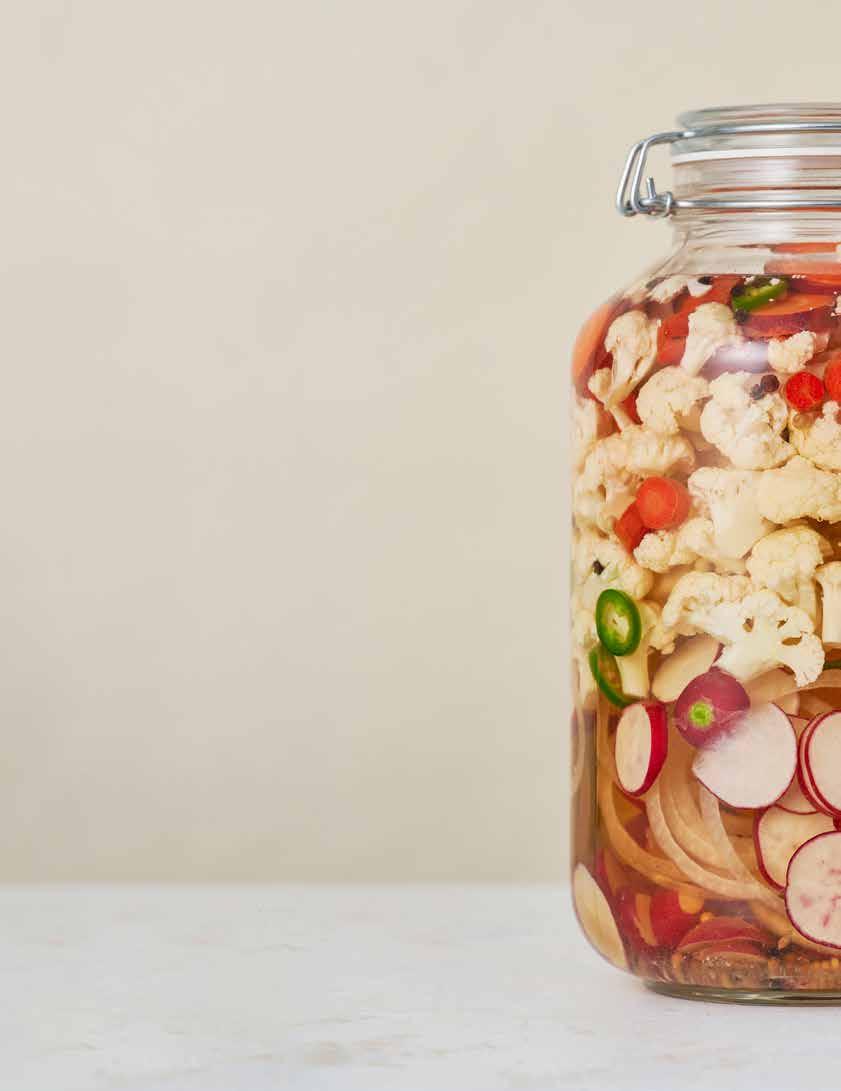
This is a great snack, side dish or condiment for any meal and is a great way to get fermented veggies in your diet! This recipe is an example of how to preserve a variety of vegetables through fermentation; once fermented, these pickled veggies are good for about six months in the fridge, extending the shelf-life of fresh vegetables considerably. You can make this as spicy or as mild as you'd like by changing the amount of peppers. This gives you the basic formula for brined vegetables so you can get creative and experiment with other vegetables you have on hand—simply use the same ratio of salt to water in the brine and go from there.
Makes 1 gallon
Prep time: 15 minutes
Cook time: 25 minutes
2 tablespoons whole black peppercorns
½ tablespoon whole mustard seeds
1 medium cauliflower head, cut into small florets
3 medium radishes, sliced (use any type you like)
4 medium carrots, cut into sticks or coins
½ cup yellow onion, thinly-sliced
6–8 garlic cloves, crushed
1 jalapeno or serrano pepper, sliced
½ cup fine-grain salt
1 gallon water
DIRECTIONS
1. Pour the peppercorns and mustard seeds into the bottom of a glass jar, then add the chopped vegetables. You can use a 1-gallon jar or several smaller jars. I like to layer the veggies so they look pretty in the jar.
2. Prepare the brine by mixing the salt into the water to dissolve.
3. Pour the brine over the vegetables, leaving about ½ inch of space at the top of the jar.
4. Place a fermentation weight on top of the vegetables to keep them submerged in the brine. This prevents mold and promotes growth of lactobacilli, which are anaerobic bacteria. Fermentation weights are glass discs that are made to fit in regular- or wide-mouth glass jars (ceramic weights are available to use with fermenting crocks) to keep vegetables submerged in brine during fermentation; they are available at food co-ops and online retailers.
5. Screw a plastic lid onto the jar. Set the jar in a dry and cool spot at room temperature. Let the vegetables sit for one week, then taste. You may eat them at this point, or if you like your fermented veggies a little more tangy and "pickled", let them sit for a few days more, up to two weeks. A very well-fermented mixture will have a cloudy brine and may have some slight effervescence as well.
6. Once the vegetables are fermented to your liking, remove the fermentation weight and transfer the jar to the fridge for storage for up to 6 months.
• It is important that the water for the brine is filtered, as chlorinated water can have an ill effect on the fermentation process and the taste of the finished product.
• Be sure to use fine-grain, pure sea salt for this recipe. Avoid salt with any additives, including iodine, anti-caking or anti-yellowing agents.
• You will likely have some leftover brine with this recipe. Use extra brine to make a small batch of fermented vegetables or use in soup, pasta water or other recipe you might need a bit of salty water.
• Check your fermented vegetables regularly: every 2–3 days, "burp" the jar(s) by opening the lid and taking it off, then putting it right back on. This lets out any extra CO2 build up, so the jars don't crack. A byproduct of the microbial growth is CO2, so there can be lots of this in the jar if you don't burp them periodically. Also check for any surface mold or yeast. Be sure your vegetables are fully submerged in the brine and you should be good to go.
• Want to speed up fermentation and enjoy your veggies sooner? Add a starter culture: For a 1 gallon batch, add 2–4 tablespoons of sauerkraut or kimchi brine, or liquid whey strained from plain yogurt.
• When your veggies are gone, don’t toss that brine! It is flavorful and probiotic-rich. Use it in dressings, marinades or soups, save some for starting future batches of veggies, or swig a bit as a probiotic gut shot!
Some tasty variations on this recipe:
• Giardiniera-style: Add 1 tablespoon fresh, chopped oregano (or ½ tablespoon dried) and swap the radish for celery, increasing the spice level if desired.
• Kimchi-inspired: Add 1 tablespoon gochugaru, Korean chili flakes, and use daikon for your radish option.

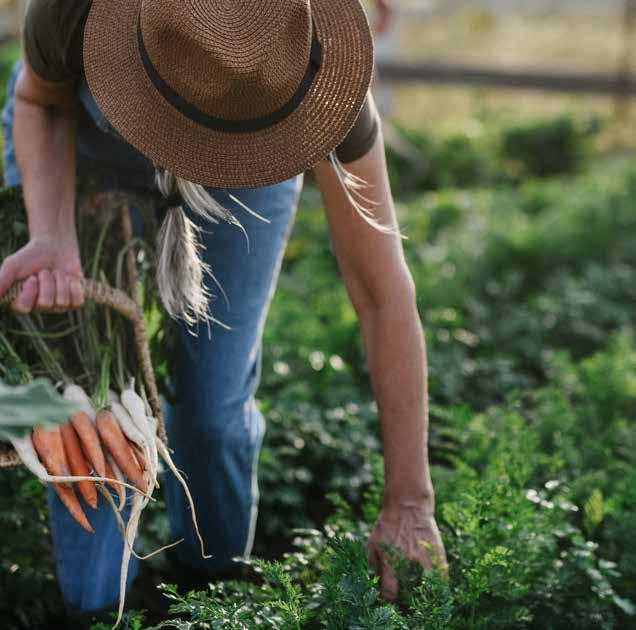
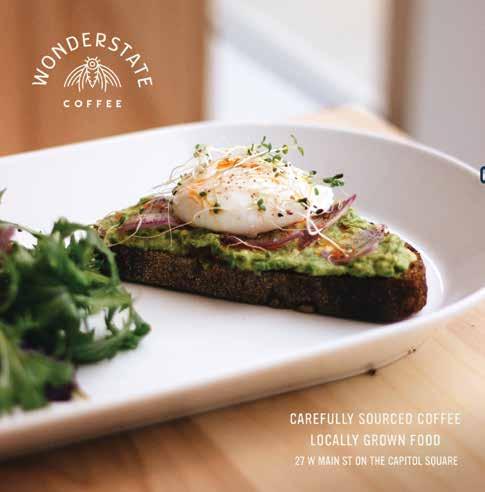

Photo by Gregory K. Scott
In these parts, wild game commonly crosses our paths. Turkeys browse in harvested fields and oak woods all winter. Canada geese, more common than anyone expected before they made a comeback in the latter half of the 20th century, litter our parks, golf courses and wetland edges. And white-tailed deer seem to be everywhere, in our pastures and woodlands, our backyards and parklands, even crossing roads ahead of our cars with little warning.
While commonplace in our communities, many people may not be aware of the food value white-tailed deer offer. Some, of course, already understand and value their homegrown provenance, and cherish ways they can enrich our diets. I’m one of those people, from a life in the outdoors. For almost five dozen autumns I’ve hunted deer, and for that many winters I’ve enjoyed the sustenance they offer.
In the southwestern and western parts of the state, our agricultural fields and woodlots offer prime deer habitat, some of the best in Wisconsin (and the country too). Deer abundance is both a blessing and a curse. Hunters statewide spend over a billion dollars a year in their pursuit, and the hunt is an important part of our rural culture. Motorists hit and kill thousands of deer on our highways. Farmers face crop damage and often obtain permits to thin the herd in their area, beyond the hunting harvest.
In an L-shaped swath of counties extending from Madison west to the Mississippi and north of La Crosse, last year gun hunters brought home over 60,000 deer, and bow- and crossbow-hunters roughly 15,000 more. My own county, Vernon, has an estimated deer population over 30,000. Statewide, the Wisconsin Department of Natural Resources (DNR) estimates we have over 1.6 million deer.
Deer meat, or venison, is leaner than other red meat like beef. A 3-ounce serving of venison contains about 136 calories and 3 grams of fat while a 3-ounce serving of 80% lean ground beef has about 216 calories and 13 grams of fat. Both have similar amounts of cholesterol, iron, vitamin B12, and other nutrients. Venison has slightly more protein than beef (26 gms/3 oz. vs. 22).
What does that tell me as a cook? I need to consider adding sauces or selected fats to keep venison moist and bring out its flavors. For ideas, I often look to older European recipes. In the period prior to 1800, European nobility relied heavily on wild game like stag and boar for meat. The castle chefs developed sauces to serve with them (which in those pre-refrigeration days may also have served to cover strong tastes of “aged” meat). After that era and the rise of restaurants and domesticated meat, cooks used farm-raised pork, beef and other meats. Today, you can pick meats from farm-raised sources, or you can turn to wild meats like venison and, in effect, modernize those old castle-cooked recipes. I enjoy making venison sauerbraten, schnitzel and parmigiana for guests.
How are you going to find venison on your own? You could take up hunting. Archery seasons run from mid-September through mid-January and the main gun season from the Saturday before Thanksgiving to the Sunday afterwards, followed by a muzzleloader season. Wisconsin’s DNR offers “Learn-to-Hunt” workshops
and beginner hunts. To hunt with a rifle, shotgun or handgun, you’ll need to take a hunter safety course, offered in hundreds of communities around the state. You’ll need to find a place to hunt, which in some parts of the state often involves finding a landowner willing to permit it. Finding a mentor who hunts and will supervise you is an important path to follow. But many, many people come to the sport on their own and enjoy it immensely. My sister wasn’t encouraged by the older men in our family to learn to hunt, but at 35 she decided it was time to learn. My brother and I helped her along, as did a DNR workshop, and her first season she killed a pair of deer. She learned from a video how to cut them up herself and has become a first-rate hunter and venison cook. Now her daughter, sons and granddaughters all hunt as a family activity.
Many deer hunters don’t eat venison but instead donate the meat. Each year hunters kill hundreds of deer which they donate to food pantries after butchers process the meat into ground venison, providing tons of protein to folks who need it. Still, many hunters would be glad to share some butchered venison with you, or even drop off a freshly-killed deer to someone who wanted to put it to use. Talk to co-workers or neighbors and you may find some meat to put to use. Even the DNR wardens in your county might have a list of people who would use a deer confiscated from a poacher, and would call you when your name comes to the top of the list. Then you’d have a choice of taking it to a butcher and having it cut to your direction, or learning to cut it up yourself.
It should be noted that for the last 20-plus years, Wisconsin deer—especially in our area—have been exposed to a disease called chronic wasting disease (CWD), which is always fatal to the deer. It first showed up in 2002 in deer around Mt. Horeb, in western Dane County, but has spread and is now infecting a third or more of deer populations in Iowa, Dane and Richland counties. It has not been shown to be harmful to humans, but it has some relationship to scrapie, a fatal degenerative disease in sheep and goats, that somehow “jumped” to deer and elk at a captive research facility in Colorado. In Europe in the 1990s, a similar disease jumped from sheep to beef, and a rare variant also caused human deaths. So the upshot is that we don’t know whether CWD will ever jump from deer to any other species, including humans, but I always recommend caution.
Since CWD was found in Wisconsin, more rapid testing has become available, and you can send in a sample from a deer and have it analyzed for free in a short time. My practice is to test any deer I have killed, whether it’s from an area with CWD cases or not, and to not eat it or feed it to my family until it’s been tested and found negative for CWD. Of over 40 deer I’ve killed since 2003, none have tested positive.
Whether you see the abundance of deer in Wisconsin as a blessing or curse, one thing most of us can agree on is the incredible value venison holds as a local food source, filling freezers across the state and providing a year-round bounty. One that, if cooked right, can bring nutrition and joy to the table in all seasons.
Traditional Italian osso buco is generally made with veal shanks, but this osso buco recipe, my interpretation of a dish from chef Hank Shaw, utilizes crosscut venison shanks and seasonal summer produce. The addition of olive oil, butter or another fat into the slow-cooking process helps keep this lean protein moist and flavorful.
Serves: 4
Prep time: 25 minutes
Cook time: 2-4 hours
½ cup olive oil, melted butter or other fat
Salt
4 crosscut venison shanks, 1 1/2-inches thick, tied with cook's string, or 2 full venison shanks
Flour for dusting
1 onion, chopped
2 carrots, chopped
2 celery stalks, chopped
½ ounce dried mushrooms (a handful), chopped
1 cup white wine
1 cup stock (beef, chicken or venison)
1 28-ounce can crushed tomatoes
1 teaspoon dried thyme
Peel of one lemon, cut into large strips without white pith
2 bay leaves
¼ cup chopped fresh parsley, for garnish
1. Preheat the oven to 300 degrees F.
2. Heat the oil in a Dutch oven over medium-high heat. Meanwhile, salt the venison shanks well and dust them with flour.
3. Brown the venison shanks in the hot oil, turning them occasionally so they’re browned all over. Remove the meat from the pot and set aside.
4. Add the onion, carrots, celery and mushrooms to the Dutch oven, and sauté until they’re slightly browned around the edges, about 6-8 minutes. Salt to taste as they cook. Pour in white wine and use a wooden spoon to scrape up any browned bits on the bottom of the pot.
5. Bring the wine mixture to a boil, then add the stock, tomatoes, thyme, lemon peel, and bay leaves. Lower the heat to a simmer.
6. Return the venison to the pot and turn it to coat with the sauce. Cover the pot and transfer it to the oven. Cook until tender, between 2 and 4 hours (less for a younger deer, more for an older one). Serve over risotto, polenta or spaetzle, garnished with parsley.
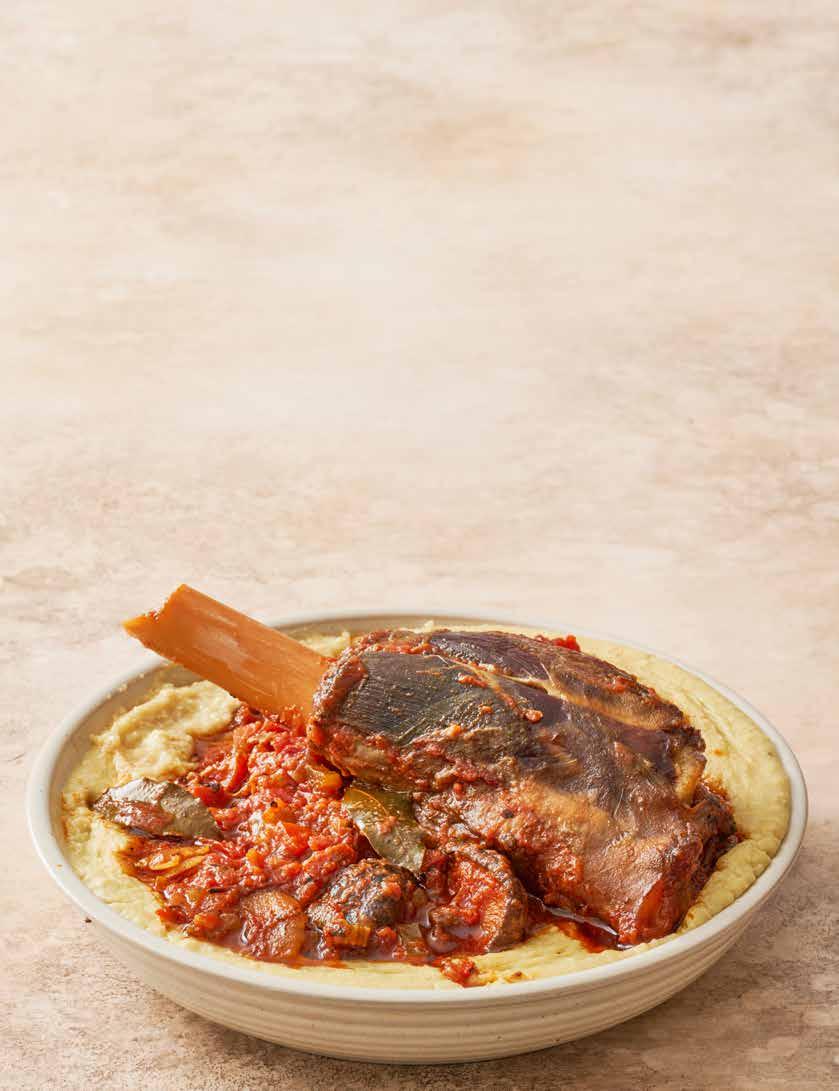
Photo by Sunny Frantz
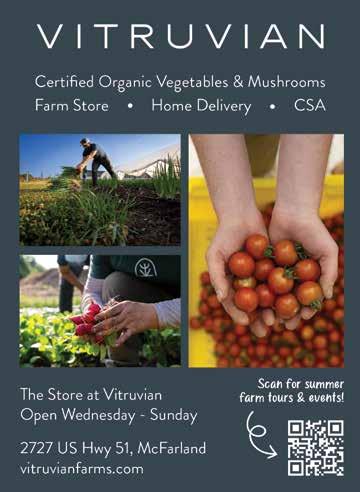
Discover the freshest way to indulge in fun—strawberry picking at Warm Belly Farm!
Our unique hydroponic system ensures easy picking at waist height, perfect for all ages. Our strawberry season is June through November. Whether you’re looking for a fun day out with friends, a romantic date, or a special family experience, our farm offers the ideal backdrop for unforgettable moments. What will you create with your harvest?
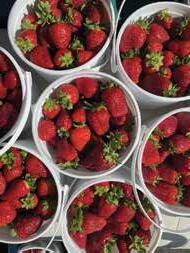
We have two strawberry picking locations. Schedule your visit online! WWW.WARMBELLY.FARM
Warm Belly Farm & Garden Center 4311 Vilas Hope Rd, Cottage Grove
Warm Belly Farm W8974 County Rd C, Fort Atkinson
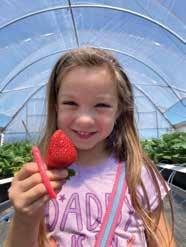
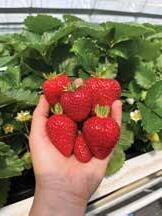



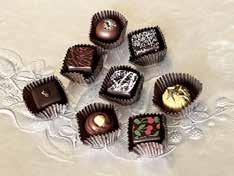

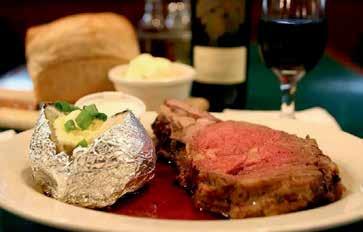






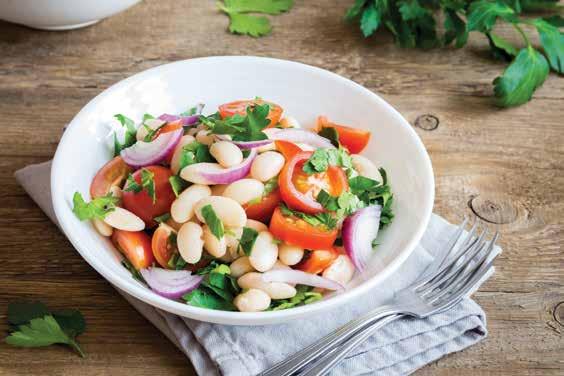



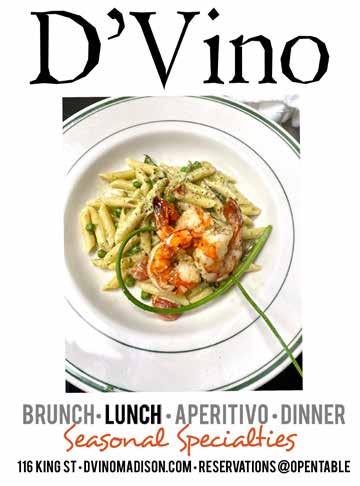
 BY LAUREN RUDERSDORF COOK AT HOME
BY LAUREN RUDERSDORF COOK AT HOME
Though we can now find berries year-round at the grocery store, nothing compares to a sun-ripened, local summer berry fresh from the garden or field. Berry season is short which makes the fruits all the sweeter. Strawberries have the shortest season, typically only ripe from mid-June through early July with seasons sometimes cut short by rainy weather.
Blueberries linger a little longer, beginning to ripen in late July and lasting through August.
Raspberries and black currants enjoy the longest season with summer-bearing varieties starting in July and fall-bearing varieties coming in just as soon as the summer berries are done, keeping us satisfied well into September. This season, we’ve got five recipes that will help you get outside the berry box and cook something new.


I love recipes that teach a new concept or demonstrate a new technique. This dish is great for its delicious introduction to quick-cooking fruit compotes and delightfully poofy baked goods (think popovers and Yorkshire pudding).
A Dutch baby is essentially a large fluffy pancake that can be made sweet or savory. The full recipe is incredibly simple, but leaves an impression with versatile skills that can be incorporated into many recipes and many summer fruits.
Serves 4
Prep time: 15 minutes
Cook time: 45 minutes
For Blueberry Compote:
12 ounces blueberries, divided
2 tablespoons white sugar
¼ teaspoon kosher salt
¼ teaspoon dried lavender
(or 1 tablespoon fresh)
¼ teaspoon lemon zest
1 teaspoon freshly squeezed lemon juice
For Dutch Baby:
½ cup whole milk, at room temperature
3 large eggs, at room temperature, beaten
1 teaspoon vanilla extract
½ cup all-purpose flour
1 tablespoon white sugar
1 teaspoon cardamom
¼ teaspoon kosher salt
1 pinch freshly grated nutmeg (optional)
4 tablespoons unsalted butter, at room temperature
¼ cup crème fraîche
Honey, to taste
1. Preheat the oven to 425 degrees F.
2. To make the blueberry compote, pour about half the blueberries into a medium saucepan and mash them with a potato masher or fork. Stir in the sugar, salt and lavender. Bring the mixture to a rapid simmer over medium-high heat, stirring frequently. Add the remaining blueberries and return the mixture to a rapid simmer. Reduce heat and slowly simmer, stirring occasionally, until the juices thicken and most of the berries have popped, about 6–8 minutes.
3. Remove the mixture from heat, let it rest for a couple minutes, then stir in the lemon zest and juice. Set aside.
There is nothing more refreshing in summer than a cool glass of agua fresca! We love sweetening ours with summer berries, which also add a beautiful bright color to the final beverage.
Serves 2-4
Prep time: 15 minutes
INGREDIENTS
2 cucumbers, peeled and cut into large chunks
½ pint raspberries
2 cups water
2 limes, juiced
½ cup sugar
DIRECTIONS
1. Combine all ingredients in a blender, Vitamix or food processor. Process until smooth.
2. Place a fine mesh sieve over a large measuring cup or pitcher. Pour the mixture through the sieve in batches. Use a spatula to help the liquid through, discarding the solids as necessary. You should end up with about 4 cups of liquid.
3. Serve the mixture over ice.
 Recipe by Lauren Rudersdorf
Recipe by Lauren Rudersdorf
4. To make the Dutch baby, combine the milk, eggs and vanilla in a mixing bowl. Sift the flour and sugar into the wet ingredients. Add the cardamom, salt and nutmeg, if using. Use a whisk or blender to blend until smooth.
5. Place a 9- or 10-inch cast-iron skillet in the oven for 6 minutes. Add the softened butter and return the skillet to the oven for 1 minute to melt, being careful to not let it burn.
6. Pour the batter into the center of the skillet and return it to the oven. Bake for 20 minutes, until puffed and golden. Lower the oven temperature to 300 degrees F and bake for five minutes.
7. Remove the pancake from the oven, add as much blueberry compote as desired, and top with crème fraîche. Drizzle with honey if desired for added sweetness, and garnish with additional lavender.
 Recipe by Jay Miller of Red Barn Catering
Recipe by Jay Miller of Red Barn Catering
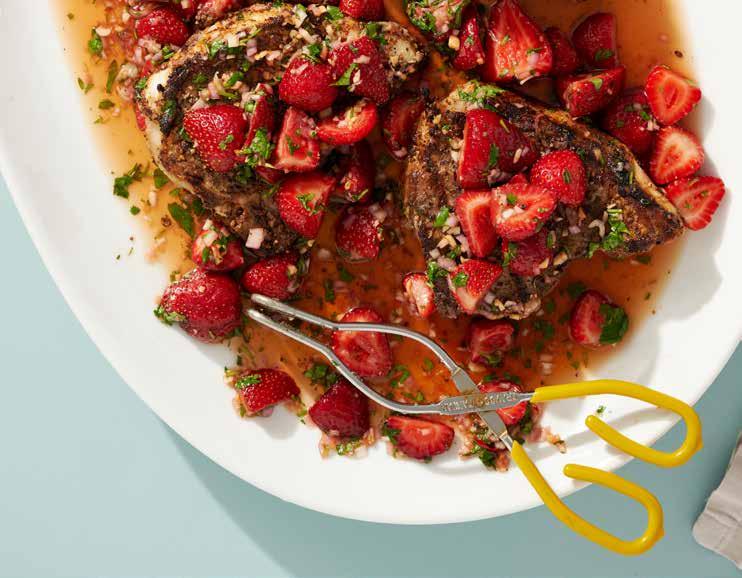
Strawberry season in southern Wisconsin is short, but I make it feel longer by incorporating strawberries into far more than just dessert. My favorite thing to make with fresh, in-season strawberries is a nouc cham. This Vietnameseinspired sauce is lovely with simple marinated and grilled local pork chops. It’s easy to make, refreshing and a perfect accompaniment on a summer’s day.
Serves 6
Prep time: 1 hour, 15 minutes
Cook time: 15 minutes
½ cup soy sauce
2 tablespoons cracked black pepper
6 cloves garlic, minced, divided
6 pork chops
2 tablespoons fresh ginger, peeled, minced
1 small shallot, minced
4 tablespoons brown sugar
1 tablespoon kosher salt, plus more for seasoning
½ cup rice wine vinegar
6 tablespoons fish sauce
1 pound local strawberries, cleaned and halved
1 Thai bird chili, sliced (optional)
½ bunch cilantro, minced
6 leaves Thai basil, torn Lime wedges, optional
1. In a small bowl, whisk together the soy sauce, black pepper, and a third of the minced garlic cloves. Place the pork chops in a shallow pan and pour the soy sauce mixture over them. Let them marinate for 1 hour.
2. Place the ginger, shallots and the remaining garlic in a small, non-reactive bowl. Macerate them with the brown sugar and salt. Cover the mixture and let stand until the pork chops are finished marinating. This step mellows the strong flavors of the garlic, ginger and shallot.
3. When the pork chops are done marinating, preheat the grill to medium-high.
4. To make the strawberry nuoc cham, place the rice wine vinegar in a small pot and bring it to a boil. While hot, pour the vinegar over the ginger, garlic and shallot mixture. Add the fish sauce, strawberries, chilis and cilantro. Taste and adjust the seasonings as desired. Depending on the sweetness of the strawberries, you may need to balance the sweetness level by adding a bit more salt (with fish sauce) or more acidity (with vinegar).
5. Season the marinated pork chops with kosher salt. Sear them on the grill, flipping when you have golden-brown grill marks. Grill until the meat’s internal temperature reaches 140 degrees F, about 15 minutes. Let the pork chops rest for 10 minutes before serving.
6. Pour the strawberry nuoc cham over the pork and top it with torn Thai basil. Serve with lime wedges.



The more colors I can get onto my summer tables, the better. I love the way the colors of this salad play off one another. Seek out bunches of mixed variety beets or a few Chioggia beets, like ‘Badger Flame,’ and a classic red to make the most of this colorful, sweet summer salad.
Serves 4
Prep time: 15 minutes
Cook time: 45 minutes
INGREDIENTS
For Dressing:
¼ cup olive oil
1 tablespoon balsamic vinegar
1 tablespoon honey
1 teaspoon Dijon mustard
½ teaspoon salt
10 twists freshly ground black pepper
For Salad:
1 large head lettuce, leaves separated and roughly chopped (or 8 ounces lettuce mix)
4 medium beets, peeled and very thinly sliced
½ large red onion, thinly sliced
1 pint fresh strawberries, cleaned and quartered
½ pint fresh blackberries, halved
¼ cup finely chopped basil
3 ounces blue cheese, crumbled
¼ cup toasted sunflower seeds
DIRECTIONS
1. For the dressing, whisk together the olive oil, balsamic vinegar, honey, mustard, salt and pepper in a small bowl until smooth.
2. Divide the lettuce among bowls for serving. Top with the beets, onion, strawberries, blackberries and basil. Drizzle the salad with the dressing and finish with blue cheese and sunflower seeds.

This recipe came to be after a good friend gifted me some beautiful fresh, foraged chanterelles just as wild blueberries were beginning to come into season. To me, the best food occurs in those magic, fleeting moments when time, place and people converge in a seemingly perfect way, and this toast is a perfect example of that. I even made this for a first date, and if the fact that we're still together is any indication of its deliciousness, then I rest my case. If you can't find chanterelles, don't fret, any mushroom you like will be tasty! Also you can make the pickled blueberries ahead of time, and there will be plenty of extras that can be thrown in a salad or on a picnic board.
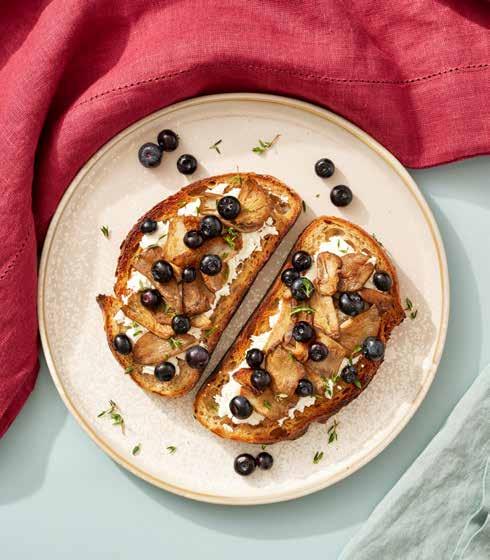
Serves 2
Prep time: 10 minutes
Cook time: 20 minutes
1 cup white wine vinegar
2 tablespoons sugar
¼ teaspoon kosher salt, divided
1 pint blueberries
½ pound chanterelles, ends trimmed
4 tablespoons butter, divided
⅛ teaspoon freshly ground black pepper
½ tablespoon fresh thyme leaves, plus a little more for garnish
2 thick (about ¾-inch) slices of your favorite sourdough
3 ounces Dreamfarm goat cheese
DIRECTIONS
1. To make the pickled blueberries, combine the vinegar, sugar and ⅛ teaspoon salt in a small saucepan. Bring to a boil over high heat. Stir to ensure everything is dissolved, and turn off the heat. Pour the mixture over the blueberries in a heat-safe container, and let cool.
2. Place a large pan on medium-high heat. Once it's hot, add the chanterelles and stir them. This should be done in a dry pan (no oil). The mushrooms will begin expelling their excess moisture. Once a decent amount of liquid is expelled, you can raise the heat to boil it off. When the liquid is gone, add 1 tablespoon of butter, and saute until the mushrooms are golden brown, about 3 minutes. Season them to taste with the remaining ⅛ teaspoon salt, pepper and thyme. Transfer the mushrooms to a bowl.
3. Add the remaining butter to the same pan, and melt it over medium heat. Toast your bread slices in the pan until they're evenly golden brown on both sides, about 2 minutes per side.
4. Spread as much goat cheese as you'd like across the bread slices, and top them with mushrooms, a few pickled blueberries and a pinch of thyme.
 Recipe by Kyle Kiepert of Reunion
Recipe by Kyle Kiepert of Reunion

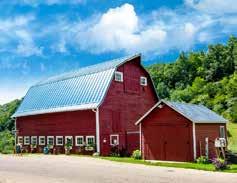







On a hillside farm near Spring Green, the boundary between fields and forests is growing fuzzy. The farm is a demonstration site for agroforestry, or the use of trees and woody shrubs for agriculture. The trees and shrubs growing on this land provide a suite of environmental and economic benefits, as well as new flavors of locally sourced, healthy foods.
“Agroforestry products are some of the most delicious and companionable foods that I know,” says Odessa Piper, a deep-roots food advocate and founder of L'Etoile, a pioneering farm-to-table restaurant in Madison.
Piper has partnered with the Savanna Institute, a nonprofit organization working to expand agroforestry in the Midwest, to demonstrate uses for perennial crops such as chestnuts, hazelnuts, persimmons and several berry species noted for their health benefits.
“It’s essential to get cooks and producers and marketers all in the same room tasting these foods,” says Piper. “We need to bring them all into conversation if we’re going to make people more aware of these nutritious perennial foods and their planet-friendly, soil-building capabilities.”
Agroforestry introduces new crops and flavors to the region. Chestnuts, a carbohydrate-rich nut, are nutritionally similar to brown rice, but with twice the protein. Persimmons are the most nutritionally dense native fruit in the US, containing 19 of 20 amino acids. Black currants are a good source of antioxidants, with three times as much vitamin C as oranges. Each of these agroforestry crops can be successfully grown in temperate Midwest climates and soils.
“Black currants are the ‘secret sauce’ of so much of my cooking,” Piper says.
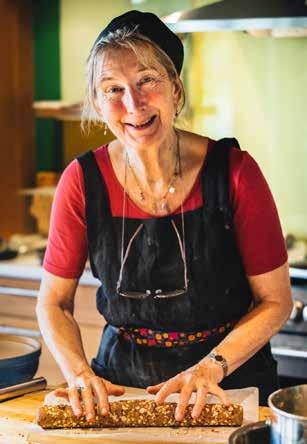
At one of the Savanna Institute’s demonstration farms outside Spring Green, gently curving rows of chestnut trees and hazelnut bushes grow in a field that had previously been used for short-lived, shallow-rooted annual crops. Sheep graze between the trees, and in other areas, vegetables and perennial grains are cultivated between the rows.
“Tree crops are a good option for people looking to make their land more resilient long-term,” says Barbara Decré, Assistant Director of Agroforestry Adoption at the Savanna Institute. Perennial crops have deep root structures that promote soil health, and woody plants are particularly good at capturing and storing carbon from the atmosphere. Integrating tree crops on farmland is consistently ranked among the top global climate solutions.
Agroforestry can also be used to reduce runoff and improve water quality. Deep-rooted perennial plants help water soak into the ground, reducing erosion and nutrient losses during heavy rains. Agroforestry systems increase on-farm biodiversity, both by increasing the diversity of crops growing on a farm and by providing habitat and protection for wildlife.
Want to learn more about agroforestry taking root in our region? Savanna Institute’s Perennial Farm Gathering will take place October 6–8 at Monona Terrace in Madison, bringing together experts and enthusiasts around food, farming, forestry, finance and more. Farm tours at the Spring Green demonstration farms are available throughout the year.
Learn more at www.savannainstitute.org.
Proud sponsor of the Savor the Summer Feast






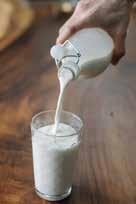



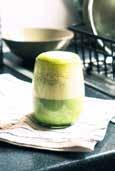
 Yee Vang, a Lifting Hearts Therapy Garden HMoob elder at Groundswell Conservancy's Westport Farm in Waunakee.
Yee Vang, a Lifting Hearts Therapy Garden HMoob elder at Groundswell Conservancy's Westport Farm in Waunakee.

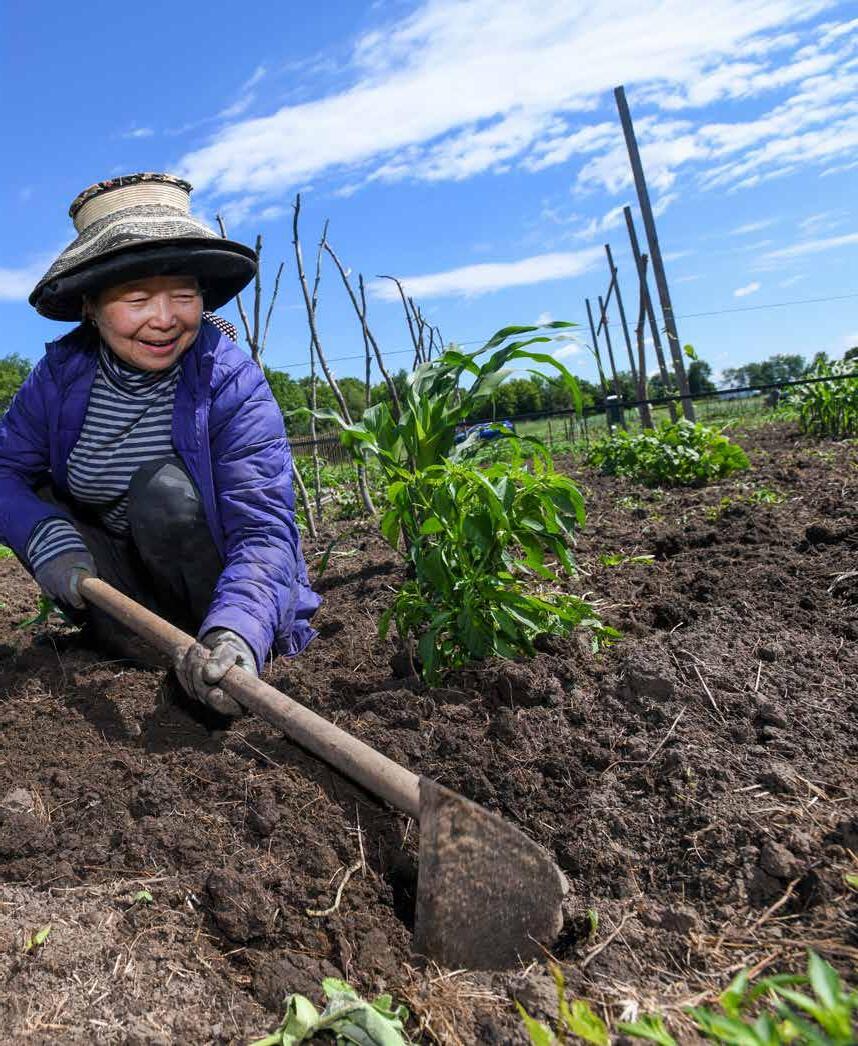
Yimmuaj Yang, Community Director for Groundswell Conservancy, a south central Wisconsin nonprofit dedicated to protecting land, is hesitant to use the word “crisis,” but doesn’t know how else to describe the current state of agriculture in the United States. “We do have a farming crisis right now,” she says. “Nationwide, we have aging farmers that do not have heirs that want to take over farming, or they are aging out and don’t know what to do with their farmland, so a lot of times those farmland owners sell their land to developers.” According to American Farmland Trust, an average of 2,000 acres of farmland are lost each day and in the next 15 years, one-third of America’s farmland and ranchland will likely change hands as current landowners age and sell. Land is most at risk of being converted to a non-agricultural use when it’s sold. While people may have become desensitized to seeing urban sprawl and new developments pop up at a rapid rate, Yang reminds us in stark terms why everyone should be concerned about this loss of farmland. In order to continue to produce enough food for people to eat, “we have to be able to facilitate new farmers into those areas,” she says.
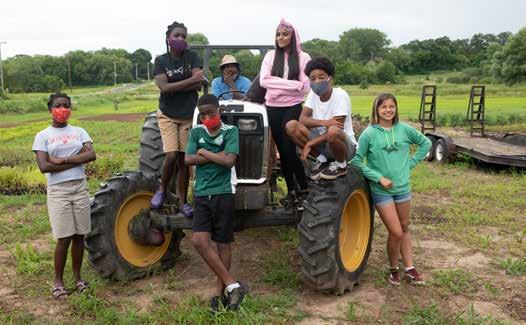
95% of farmers and 96% of land owners are white, a decrease from 1910 when data showed 14% of farm owners were Black alone
The loss of farmland to development isn’t the only issue leading to the current crisis. When it comes to farmland ownership and equitable access to land, there are great inequities due to ongoing systemic racism in the United States. According to the latest census data, 95% of farmers and 96% of land owners are white, a decrease from 1910 when data showed 14% of farm owners were Black alone. For generations, public policy has facilitated the removal of millions of acres from people of color through policies such as the Indian Removal Act of 1830, the Homestead Acts of the mid-1800s, and the cancellation of Field Order No. 15, better known as “40 Acres and a Mule,” which initially promised redistribution of land to formerly enslaved Black people before it was overturned by President Andrew Johnson. More recently United States Department of Agriculture (USDA) policies have continued to favor white farmers; in 2020 the agency granted loans to only 37 percent of Black applicants in one program that helps farmers pay for land, equipment and repairs but accepted 71 percent of applications from white farmers, according to a POLITICO analysis of USDA data.
Wisconsin is not immune to this discrimination. Despite a rich history of BIPOC [Black, Indigenous and other people of color] growers tending the land here, according to recent census data, 99% of Wisconsin farmers are white and 65% are male. “So we have aging farmers, the majority of whom are white, and then we have a lot of beginning farmers [or] socially disadvantaged, historically excluded farmers who do want to farm but face barriers to owning farmland,” Yang says. “Locally here in Dane County the majority of BIPOC farmers don’t own land and many even have a hard time renting land.” While there is prime farmland right in and around the city of Madison, there are numerous challenges to accessing it. “What people have done in the past is they literally drive around and knock on doors and say, ‘Hey, I’m looking for a piece of land to lease to grow food for my family or for market….Most of the time they don’t have a lot of luck—there is a lot of misunderstanding and cultural differences,” Yang says. “For those who have been able to knock on somebody’s door and been able to rent, it’s been a handshake agreement. It’s on an annual basis so there is no land security.” While Dane County also owns farmland, the process of how to lease this land can be tricky to navigate and single-crop producers have an advantage, Yang says. “Dane County doesn’t lease small acreage; they lease hundreds of acreages to a single corn or soybean farmer because it makes it easier for them on their end.”
Groundswell Conservancy, a land trust founded in 1983, has historically worked to preserve farmland in southern Wisconsin. More recently the organization has also turned their attention to urban agriculture and helping growers overcome barriers by focusing on the three stages of equitable land access identified by Yang: Land access, land security and land ownership. “First and foremost, it’s being able to be on a piece of land,” Yang says. “Once somebody is on a piece of land, it’s having that land security, knowing that a farmer or land seeker can invest in their farm business knowing that it can be theirs.” One way that Groundswell provides people with the first two stages of equitable land access is through their ownership of what they refer to as their two “community farms,” the Westport Farm in the village of Waunakee and Pasley’s Swan Creek Farm in Fitchburg. The Westport Farm, which Groundswell purchased in 2018, is an area of 10 acres leased to HMoob (Hmong) growers who fall into one of three categories. “One is growers who are producing for family use, one group is market growers, those who produce to sell at farmers’ markets or wholesales, and then we have our therapy garden which is specifically for HMoob elders who are attending the Southeast Asian Healing Center,” Yang says. Cho Xiong, HMoob elder, says the garden at Westport has brought immense joy to her life. “The therapy garden brings happiness to our lives,” Xiong says. “We don’t want very much. We want to grow food, to be happy and we want to matter in the community.”
At both Westport and Pasley, a 35-acre property with 14 acres of farmland leased to Neighborhood Food Solutions for farmer training programs with youth and people who were formerly incarcerated, Groundswell also provides infrastructure including access to water sources. “Many times when people lease land it’s just land, there is nothing else,” Yang says. “We are slowly building out those basic infrastructural needs on the farm.”
To meet the third stage, land ownership, Groundswell is currently working on a pilot project with American Farmland Trust and Dane County Land and Water Resources Department to purchase farmland in Dane County.
“It’s farmland ownership by using the conservation easement tool that land trusts have. The idea is to make sure that farmland is affordable,” Yang says.
Rooted is another Dane County nonprofit organization that is dedicated to providing equitable access to land. In addition to providing staff support for community gardens in Madison and Dane Country, in response to
The therapy garden brings happiness to our lives,” Xiong says.
“We don’t want very much. We want to grow food, to be happy and we want to matter in the community.”

community demand, Rooted staff is also working with Dane County to manage and help expand the growing space at Anderson Farm County Park in nearby Oregon. “We've rented 23 ¼ acre plots, a mix of market and family production, and this year are expanding the site with 13 one-acre plots which will be mostly market farmers,” says Nicholas Leete, Rooted’s Community Gardens Network Director. This year Rooted is also renting and subleasing an 8-acre piece of land from the McFarland School District to provide growing space for a group of HMoob farmers who were recently displaced from another piece of land in McFarland.
“Our mission is to make land and food generally available to people who want it, as well as support learning around that,” Leete says. “We try to act in response to requests from the community and what we have seen are a lot of requests for areas larger than your standard community plot from HMoob farmers growing for their families or growing for market, that are also close to the city for access. That is what we have tried to supply at Anderson, as well as the land we are renting at McFarland.”
Rooted also leases several plots of land—in exchange for a fee or an agreement to offer educational programming to the public—to growers at Troy Farm, Rooted’s organic urban farm on the northside of Madison. “What we are offering at Troy Farm is really a very well set up space,” says Paul Huber, Rooted’s farm director. In addition to being located within the city on Madison’s rapid bus line, the farm provides manageable smaller plots, ranging in size from ¼ to ¾ acres, and important infrastructure. “We have nice road access, storage space, two different coolers, a building where people can wash and process vegetables, an irrigation system, well water, electricity, hand tools, power tools, a 2-wheel tractor, a 4-wheel tractor, greenhouse space…everything you would need,” Huber says.
Sei Kidau is one of the farmers leasing land at Troy Farm. Originally from Liberia in West Africa, Kidau has always planted seeds. “When I was 6 years old in my yard in Liberia, I ate a mango,” Kidau says. “It was very nice, so I planted that seed and that tree is still there today.” After immigrating to the United States with his family at a young age and relocating to Milwaukee, Kidau continued to grow food in a bucket on his apartment’s balcony just for fun. Unable to find any hot peppers like the ones they were used to at home, Kidau’s relatives in Liberia would hydrate the peppers, grind them, seal them and mail them to Kidau and his family in the states.

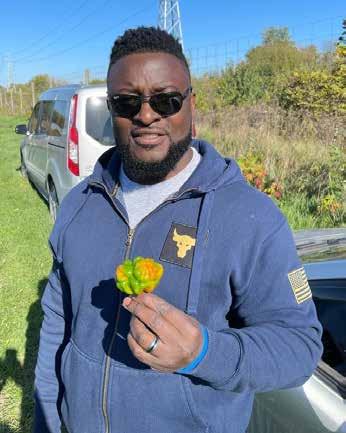
Kidau is no stranger to the issues facing young and BIPOC farmers when it comes to having land. “When we talk about equitable access to land, it’s all about finance. It’s all about knowledge. My background is as a mortgage banker so there is a parallel between minority home ownership and minority land ownership, it’s the same issue. Knowledge and understanding of the process to get land,” he says.
Even though he grew up in an agricultural family, when it came to a career Kidau first sought a different line of work. “When I moved to America the focus was, how do you survive in this economy? You go about your way, do your normal thing, but I’ve always been pulled back to the soil. It’s in my DNA.” After outgrowing his backyard garden space, Kidau now leases a ¾-acre plot at Troy Farm where he grows the types of vegetables he grew up eating but could never find in stores when he first moved to Wisconsin: Scotch bonnet peppers, garden eggs, certain types of okra. While Kidau would eventually like to own land, a homestead of up to 40 acres, he knows it might be hard. “It is more challenging to be within striking distance of the city to find affordable farmland. That is a reality,” he says. For now Troy Farm serves “as a very good experimental ground,” Kidau says. “Growing up and then coming to Wisconsin, farming wasn’t something that I thought of as a profession…But now that I have had my midlife crisis, I want to get back to the soil,” Kidau says with a laugh.
Despite the statistics, Yang remains optimistic. “As much as we are all saying, ‘Oh my gosh, the future of farming, kids don’t want to farm,’ I’m really hopeful that people of color want to farm and younger people of all colors want to farm,” Yang says. When she recently attended Marbleseed, an annual Midwest organic farming conference, Yang saw more young farmers from all different cultural backgrounds than she had ever seen there before. “There is hope,” Yang says. “If we can tailor USDA programs and services and other resources around diversity of agriculture and if we are able to facilitate ownership to current farmers who are looking to own land and future farmers, I think that we will be able to address the farming crisis.”

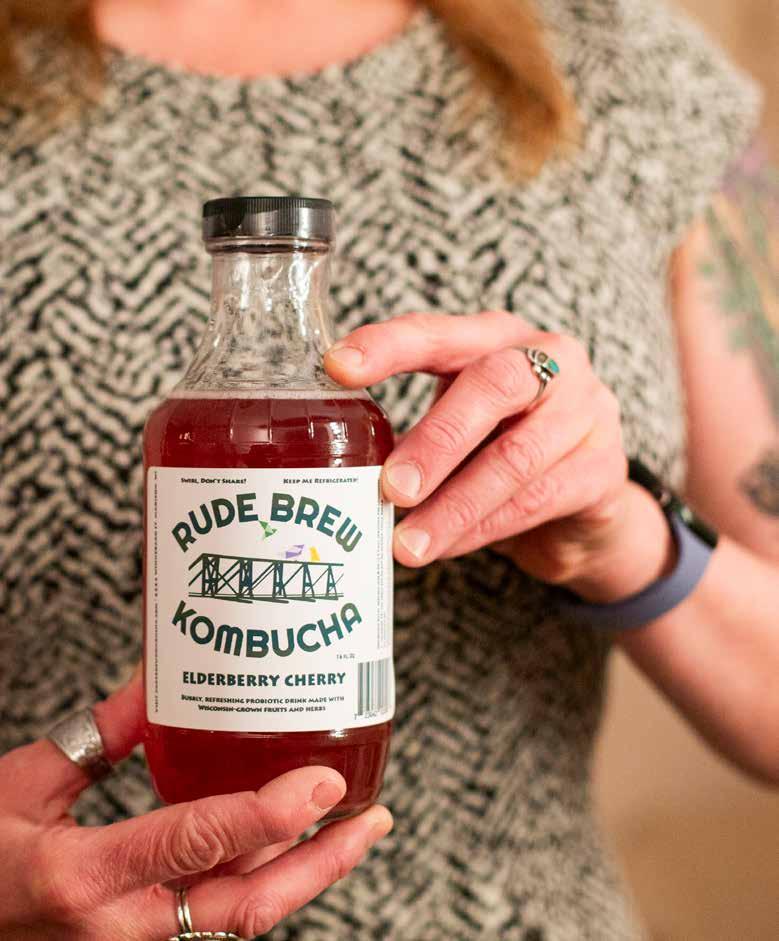
“N urturing nature, health, wellness…that’s the biggest thing that I like to pass along to other people…that connection.”
It’s a connection that is growing, especially as Lacy Rude moves her kombucha operation into its new home in the basement of The Bur Oak on Madison’s Williamson Street. After six years at the food startup space FEED Kitchen, the owner and operator of Rude Brew Kombucha relocated her business in March 2024 to a space that’s giving her room to expand.
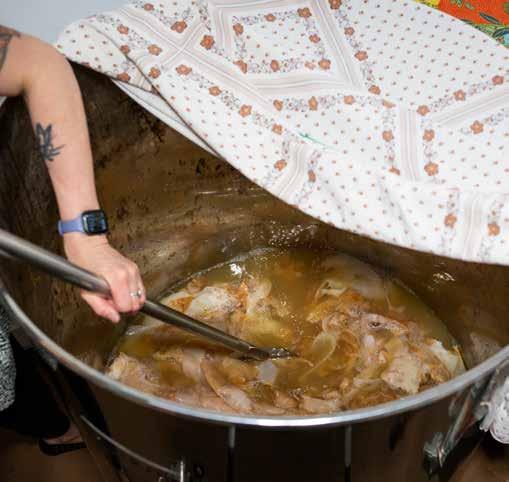
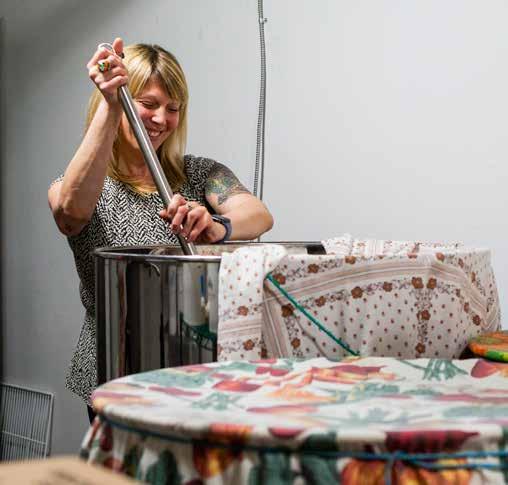
Rude produces 200 to 300 gallons per week of kombucha, a fermented beverage made with tea, sugar, and healthy yeasts and bacterias from a SCOBY (or symbiotic colony of bacteria and yeasts). Her hopes for the future in the new space include producing an additional 200 gallons per week, offering more brewing classes, hosting community events and adding additional flavors to her already robust lineup.
Rude Brew Kombucha has about a dozen flavors. Half are flagship flavors, which include Elderberry Cherry, Blueberry Basil and Reishi Root Beer, and the other half are seasonal flavors that rotate every two to three months. Rude also started a line of raw honey kombuchas, or juns, and THC-infused jun made from local honey, which have quickly become fan favorites.
“I don’t make any flavors that don’t have some form of fruit or herb that are from or grown here,” says Rude. Her focus is utilizing local produce, spending the summer season picking berries and growing herbs. Blueberries come from The Berry Farmer in Baraboo; cherries from farms in Door County, Mukwonago or even a friend’s yard in Madison; peaches and strawberries are from Creek Bed Farmacy in Poynette; and rishi and chaga mushrooms are sourced from Andrew Griffin of MicroMyco Growers. But Rude’s favorite local ingredient is elderberry. “It’s just beautiful and bright and so good for you, packed with antioxidants.”
What she doesn’t source from Purple Haze Orchard in Randolph, Rude forages herself. “I’ll go out during the season for quite a few days and harvest tons of elderberries,” says Rude. “Then I juice them and can the juice or freeze it depending on what I’m going to do with it. I can use that throughout the year until next season.”
Foraging and preserving the bounty of the season was something Rude grew up practicing in the small town of Millston. Her father was a big outdoor and kitchen hobbyist. “I remember him lugging me into the woods for hours
Top left: While perhaps not the most appetizing sight, this 40-pound SCOBY (symbiotic colony of bacteria and yeasts) is essential to producing Lacy Rude's delicious fermented beverages.
Bottom left: Rude stirs a vat of kombucha in her new basement space at The Bur Oak in Madison.
Right: Rude hand labels a bottle of her new THC-infused jun made from local honey.
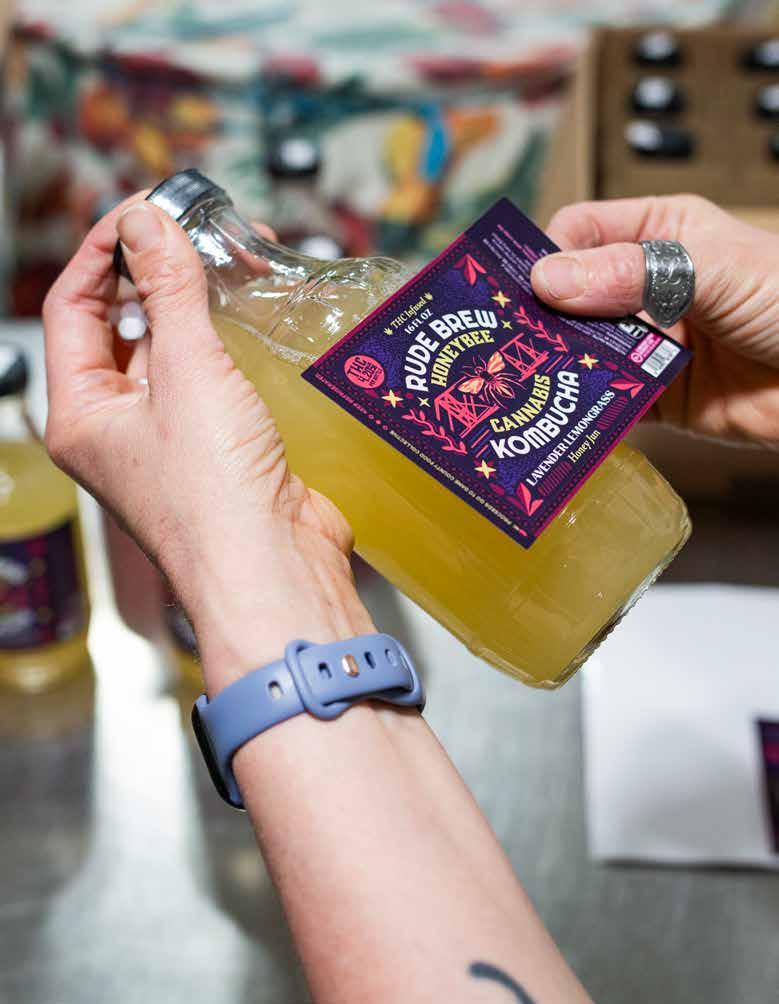
“Rude Brew’s whole focus is community, bringing people together, nourishing the earth, gut, brain connection...”
—LACY RUDE, OWNER OF RUDE BREW KOMBUCHA


by
in hip waders, through the swamp to do all this ridiculous stuff,” says Rude. “When I was a kid I hated it...now I do all the same things pretty much.”
Rude remembers her father brewing kombucha in their kitchen in the ’90s, which is what helped inspire her to start brewing for fun years later. Kombucha became her outlet to spread health and happiness during a time when Rude found herself feeling quite the opposite in her professional career.
“I was burned out working in the mental health and addiction field for 10 years,” shares Rude. “I was pursuing my graduate degree and I was just feeling like, ‘I don’t know if I can keep doing this.’ My parents were struggling with addiction issues at that time that had gotten really bad. I was feeling super overwhelmed. It was just too much.” In 2017, after Rude’s father passed away, she made the big decision to start brewing for more than just her friends and family and founded Rude Brew Kombucha. “It felt right and I just did it,” said Rude.
Since then Rude Brew has gained a loyal following thanks to the unique kombucha flavors and Rude’s focus on local products and community-building. In addition to its delivery, pickup and subscription programs, Rude Brew beverages can be found at grocery stores, restaurants and cafes across Madison and southern Wisconsin.
A beverage that helped change the course of Rude’s life–rooted in family, mental health relief and nature–is now offering a delicious way to drink healthy and local. “Rude Brew’s whole focus is community, bringing people together, nourishing the earth, gut, brain connection,” says Rude. “All of that is so important... everything is connected.”
Bottom
Rude


You already eat farm-to-table. Why not imbibe locally too? Try these Wisconsin beverage makers for some of the most creative refreshments around.
Since 1994, Madison’s Original Brewpub has served up award-winning craft beers alongside local and global pub fare. They feature a rotation of classic European varieties, modern styles, and cask-conditioned ales. Find six-packs of your favorite Dane recipes at local retailers and all pub locations.
GREATDANEPUB.COM
@greatdanepub /greatdanedowntown
Featuring their Mango Tango IPA and Dog Daze Cherry Hard Seltzer.
Stop in to the Grumpy Troll in Mount Horeb to try one of their 12 rotating, handcrafted microbrews made onsite. Their taproom is the perfect place to gather with friends and family or host any event! Be sure to try one of their delicious smokehouse offerings from their award-winning pitmaster.
THEGRUMPYTROLL.COM
@grumpytrollbrew /grumpytrollbrew
Featuring their Barrel Aged Imperial Stout.

Bailey’s Run Winery is open 7 days a week. Neapolitan pizzas and live music every weekend! “WhereWineGoestoHaveFun!”
BAILEYSRUNVINEYARD.COM
@baileysrunvineyardandwinery /baileysrunvineyard
Featuring their Loopy red wine.
Family-owned boutique winery located on the doorstep of Devil’s Lake State Park. Stop in for wine, food, beer and music.
BALANCEDROCKWINERY.COM
@balancedrockwinery /balancedrockwinery
Featuring their Seyval American white wine.
When you're thinking of going out to explore a new place to eat or meet friends for drinks please consider these generous sponsors.

A woman-owned natural winery in the heart of the Driftless region. Wines are available at our tasting room, or to ship nationwide.
802 Ridge Street, Mineral Point AMERICANWINEPROJECT.COM

Forage Kitchen crafts specialty salads, hearty grain bowls, and soups crammed with mouth-watering, wholesome, local ingredients that keep you happy and satisfied all day long.
Locations Across Madison EATFORAGE.COM

A country roadhouse serving burgers made from locally-grown beef and other local fare. The Friday night fish fry, wood-fired pizza nights and smoked rib nights are not to be missed!
132 S. Main St, Lime Ridge BRANDINGIRONRH.COM

A spacious lounge offering cocktails, brunch, local brews, upscale bar fare (including vegan and gluten free options), and regular live music inside the historic Garver Feed Mill five days a week.
3241 Garver Green, Madison GARVEREVENTS.COM/LOUNGE

A cozy, upbeat spot to grab delicious, ethically sourced coffee and other specialty drinks. Thoughtfully developed breakfast and lunch menus highlight local goods.

A neighborhood bar and bistro with great cocktails, 22 draft lines, and a seasonally inspired menu. Join us for Happy Hour Monday-Friday!

A one-of-a-kind bakery specializing in handcrafted, all-butter croissant creations available at their storefront as well as the Dane County and Northside farmers’ markets.
1924 Fordem Ave, Madison FARBRETONBAKERY.COM

We’re an independent, woman-owned and operated, certified organic craft brewery. We brew big, flavorful organic beers that make a positive impact on our community and the environment.
931 E. Main St, Ste 9, Madison GIANTJONES.COM
Bringing the flavors of the Southwest to the Midwest with time-honored recipes. Madison’s favorite margarita! Gathering with friends for over thirty-five years.


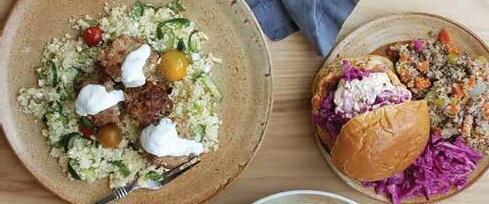

We would not exist without the support of the businesses and organizations that advertise in our pages. This support allows us to pay writers, designers, photographers, print and distribute this issue and make this a free publication for readers to pick up throughout southwestern Wisconsin.
Please support the following businesses to experience the best local, seasonal and sustainable products and services in the region.
If you enjoy this publication and want to support our work, please consider subscribing. An added bonus: you won't miss an issue. Subscribe at ediblemadison.com
Thank you!
GROCERY STORES & FARMERS' MARKETS
CATHRYN’S MARKET AND ROCKWELL RIDGE FARM cathrynsmarket.com
PEOPLE’S FOOD CO-OP pfc.coop
VIROQUA FOOD CO-OP viroquafood.coop
WANDER PROVISIONS wanderprovisions.com
WILLY STREET CO-OP willystreet.coop
LIFESTYLE & KITCHEN
GOOD DAY SHOP gooddayshop.net
RED BARN AT GRIFF RUN griffrun.com/shop
SIFT & WINNOW siftandwinnow.com
HEALTH & WELLNESS
TELSAAN TEA telsaan.com
EVENTS
GANDY DANCER FESTIVAL gandydancerfestival.org
HISTORIC TEMPLE THEATRE OF VIROQUA historictempletheatre.com
SAVOR THE SUMMER FEAST ediblemadison.com/events/ savor-the-summer-feast
TOURISM
IRON AMETHYST INN & THE 2ONE SPEAKEASY ironamethyst.com
LATARNIA GUEST HOUSE latarniaguesthouse.com
OLBRICH BOTANICAL GARDENS olbrich.org
PARLOR HOTEL parlorhotel.com
VIROQUA CHAMBER viroquachamber.com
FARMS & FOOD GOODS
DOUDLAH FARMS doudlahfarms.com
DRIFTLESS CHOCOLATES driftlesschocolates.com
FARMERSOWN MARKET AT PARKER FAMILY FARMSTEAD parkerfarmstead.com
HIDDEN SPRINGS CREAMERY hiddenspringscreamery.com
HONESTLY CRANBERRY honestlycranberry.com
LANDMARK CREAMERY landmarkcreamery.com
MEADOWLARK FARM & COMMUNITY MILL meadowlarkorganics.com
RIEMER FAMILY FARM riemerfamilyfarm.com
VITRUVIAN FARMS vitruvianfarms.com
WARMBELLY warmbellyfarm.com
HOME & GARDEN
SEED SAVERS EXCHANGE seedsavers.org
FOOD, AGRICULTURAL & SUSTAINABILITY ORGANIZATIONS
FAIRSHARE CSA COALITION csacoalition.org
FARM TO CONSUMER LEGAL DEFENSE FUND farmtoconsumer.org
SAVANNA INSTITUTE savannainstitute.org
FOOD & BEVERAGES
AMERICAN WINE PROJECT americanwineproject.com
ARTHUR’S SUPPER CLUB arthurssupperclub.com
BAILEY’S RUN VINEYARD baileysrunvineyard.com
BALANCED ROCK balancedrockwinery.com
BRANDING IRON ROADHOUSE brandingironrh.com
THE COOPERS TAVERN thecooperstavern.com
DRUMLIN RIDGE WINERY drumlinridgewinery.com
D’VINO dvinomadison.com
FAR BRETON BAKERY farbretonbakery.com
FARM HEARTH & BISTRO farmhearthbistro.com
FORAGE KITCHEN eatforage.com
GARVER LOUNGE garverevents.com/lounge
GIANT JONES giantjones.com
GREAT DANE PUB & BREWING COMPANY greatdanepub.com
GRUMPY TROLL BREW PUB thegrumpytroll.com
HOMECOMING homecomingspringgreen.com
HORSERADISH KITCHEN & MARKET horseradishkitchen.com
ISLAND ORCHARD CIDER islandorchardcider.com
LET’S SHINE COFFEE letsshinecoffee.com
LOMBARDINO’S lombardinos.com
MADISON SOURDOUGH madisonsourdough.com
ONE & ONLY oneandonlywi.com
PASQUAL’S CANTINA pasqualscantina.com
PASTURE & PLENTY | P&P MAKESHOP pastureandplenty.com
REUNION reunionspringgreen.com
SWEETGREEN sweetgreen.com
TIPSY COW tipsycowmadison.com
WONDERSTATE COFFEE wonderstatecoffee.com
PETS THE PETINARY CLINIC petinaryclinic.com
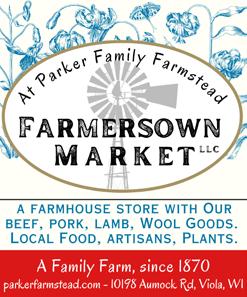
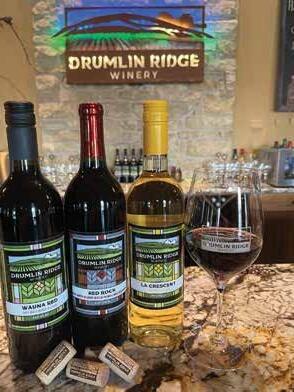





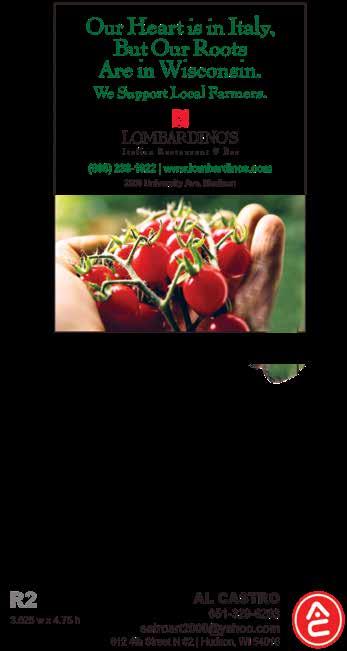







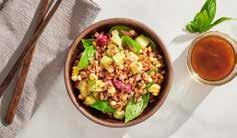


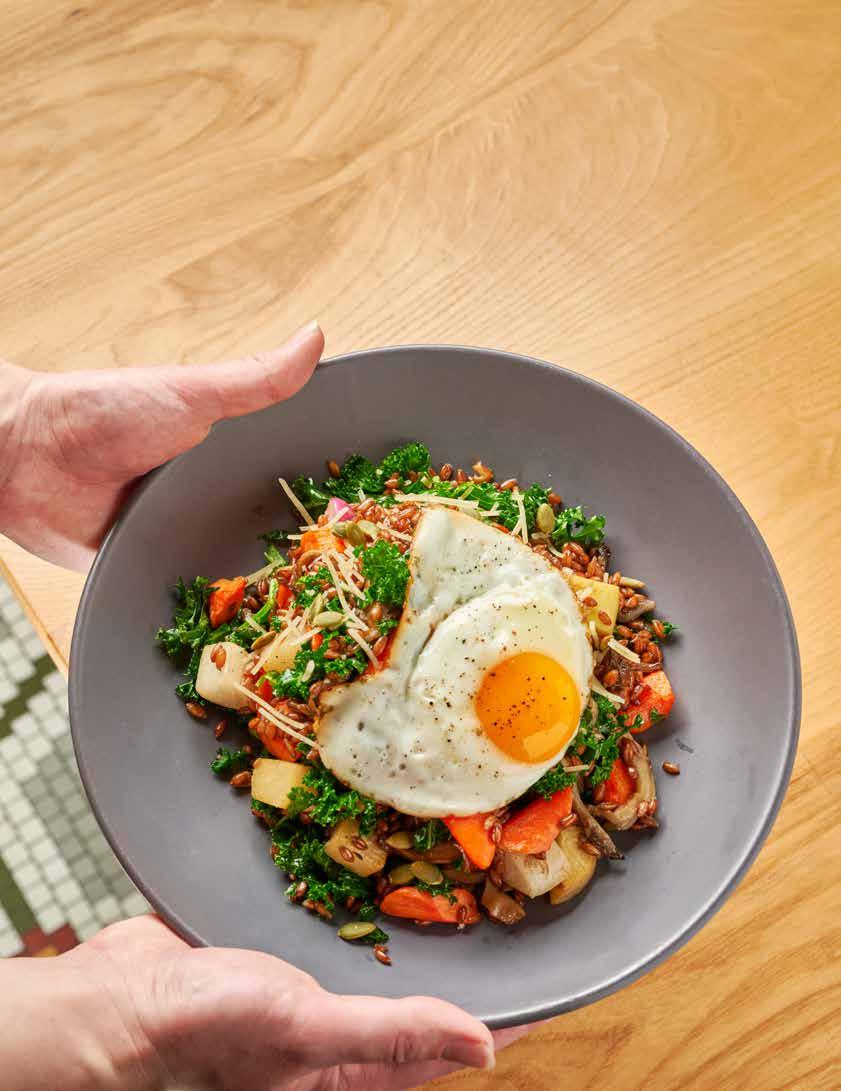 BY MARISSA DEGROOT
BY MARISSA DEGROOT
For this James Beard Award semifinalist in Outstanding Hospitality, care and consideration are in every dish. The team at Pasture and Plenty in Madison builds connection through meals and events that bring people together and put the bounty our local land provides into every bite. Chefs Jack Huibregtse and Ashley Knipschield gathered an entire community of Wisconsin farmers in one savory summer grain bowl— showcasing some of the best the season has to offer.
Photo by Sunny Frantz Autumn Bosma Pasture and Plenty Catering and Event Coordinator Spelt Berries Meadowlark Community Mill Oyster Mushrooms Vitruvian Farms Wisconsin Parmesan Sartori Cheese Radishes Winterfell Acres Peppers Crossroads Community Farm (delivered by Garden To Be) Kale Elderberry Hill Farm Egg Pecatonica Valley Carrots Driftless Organics


